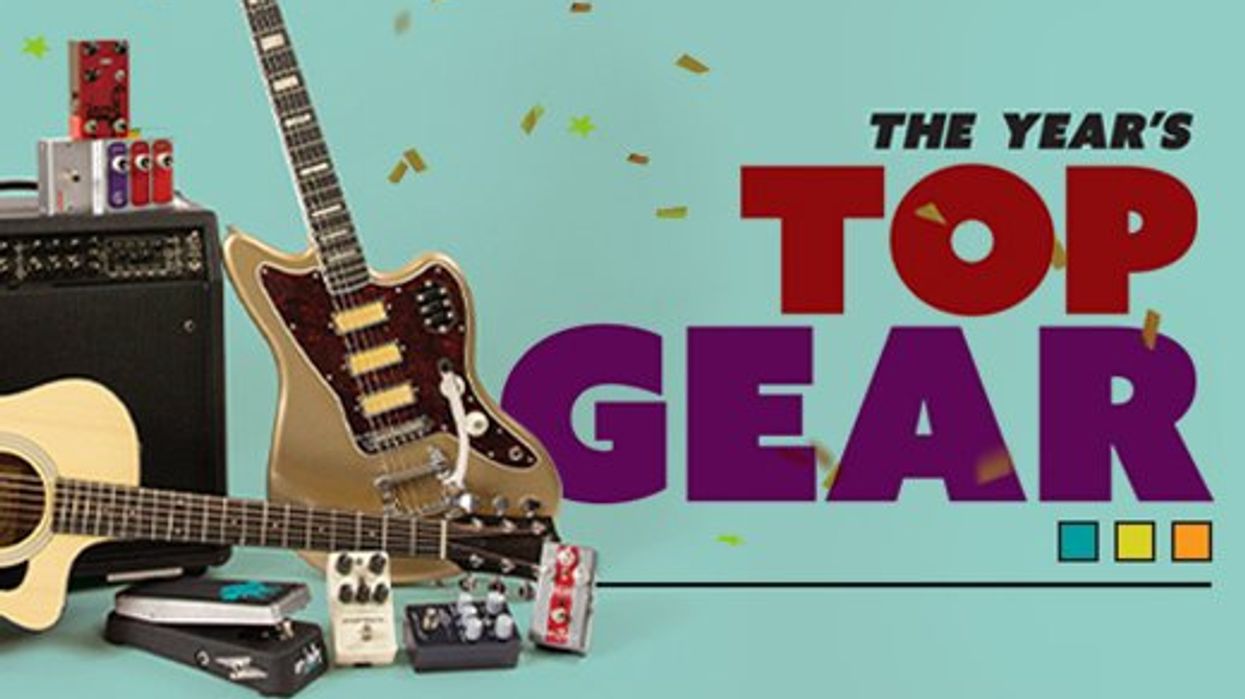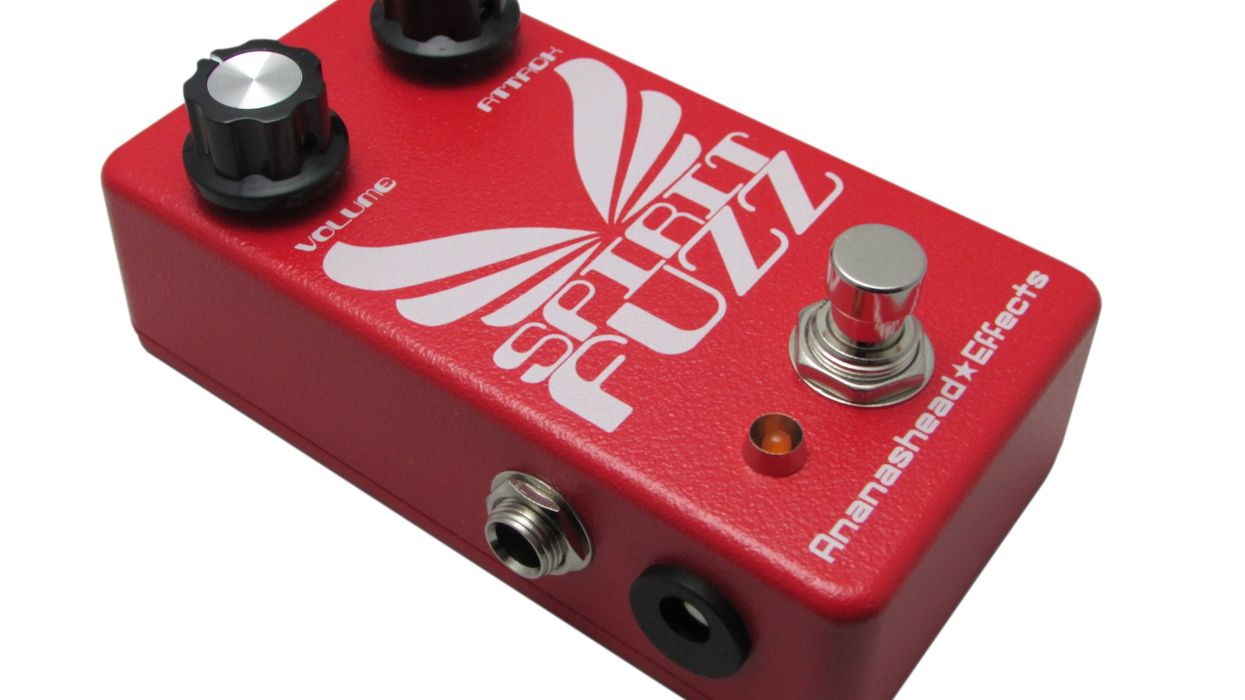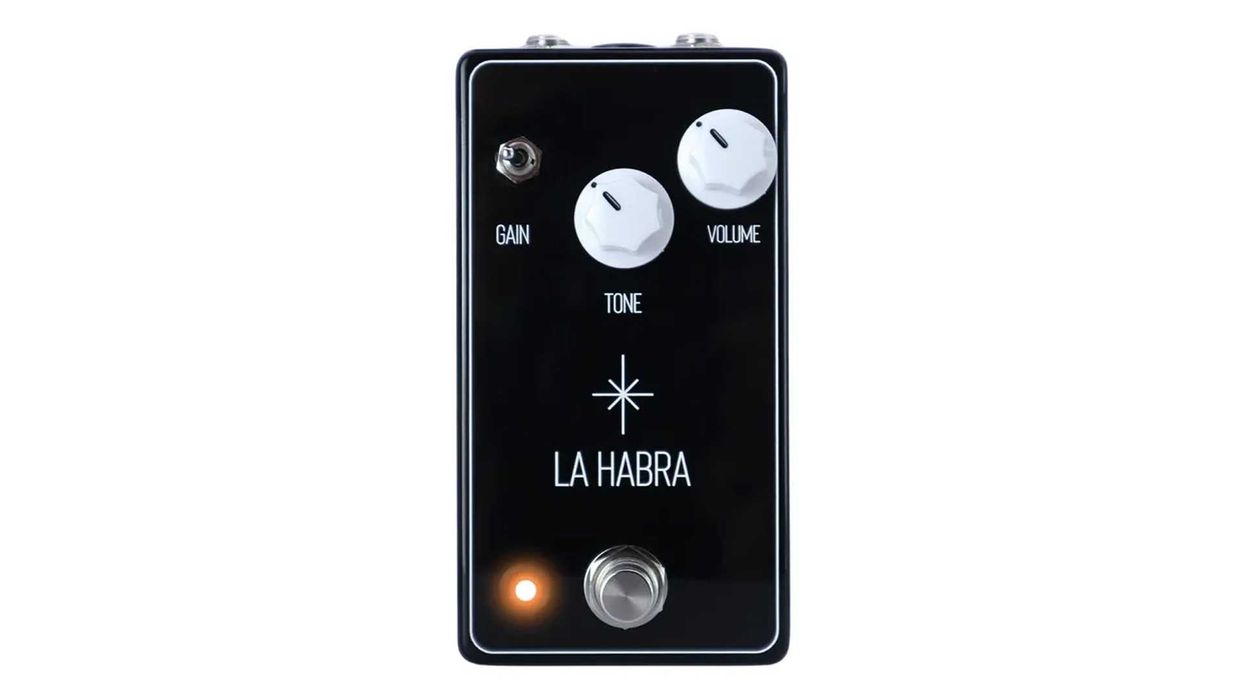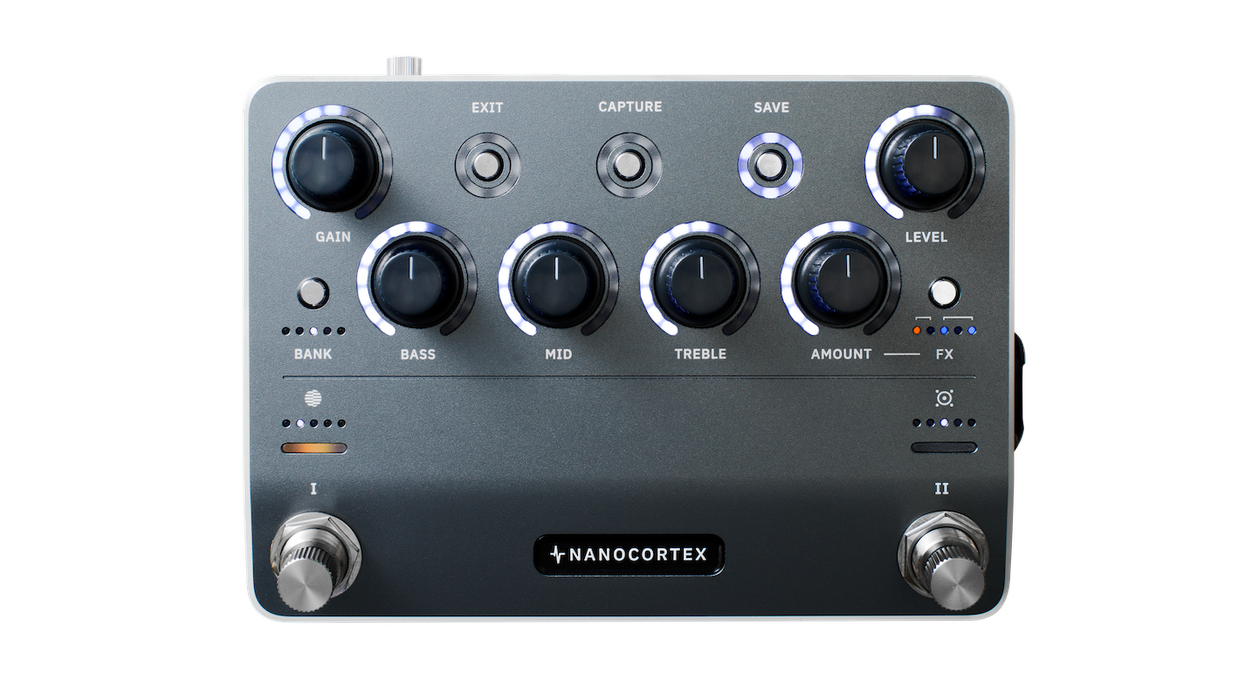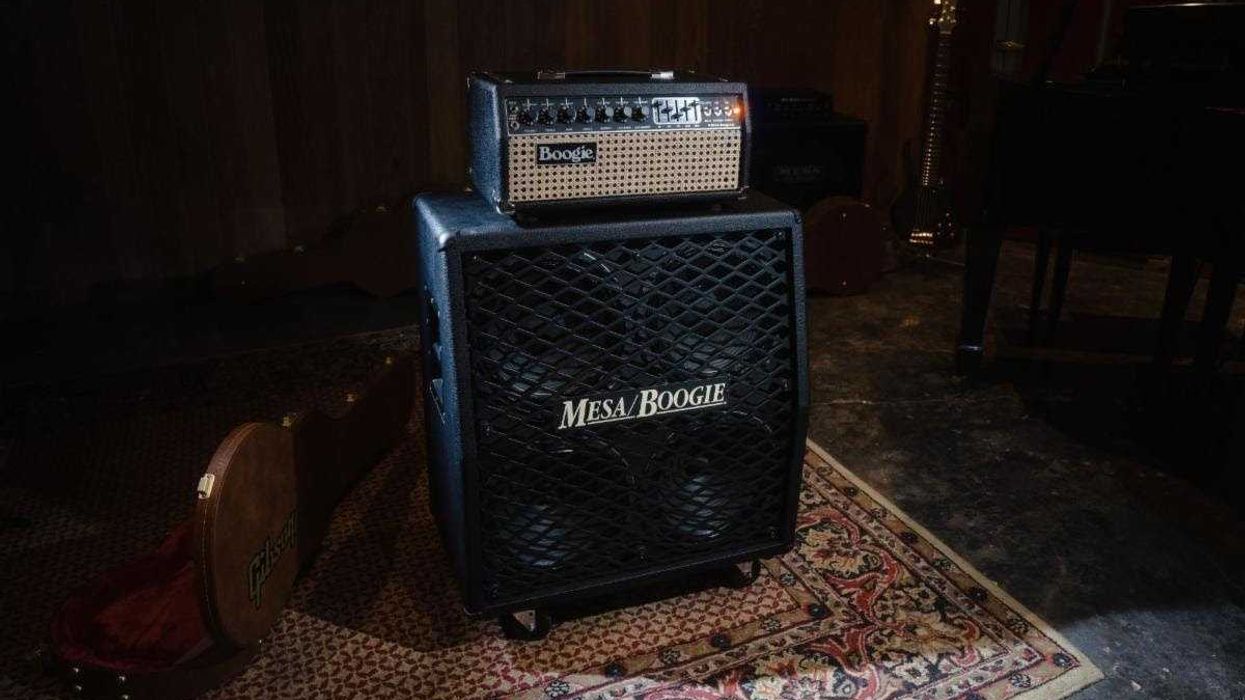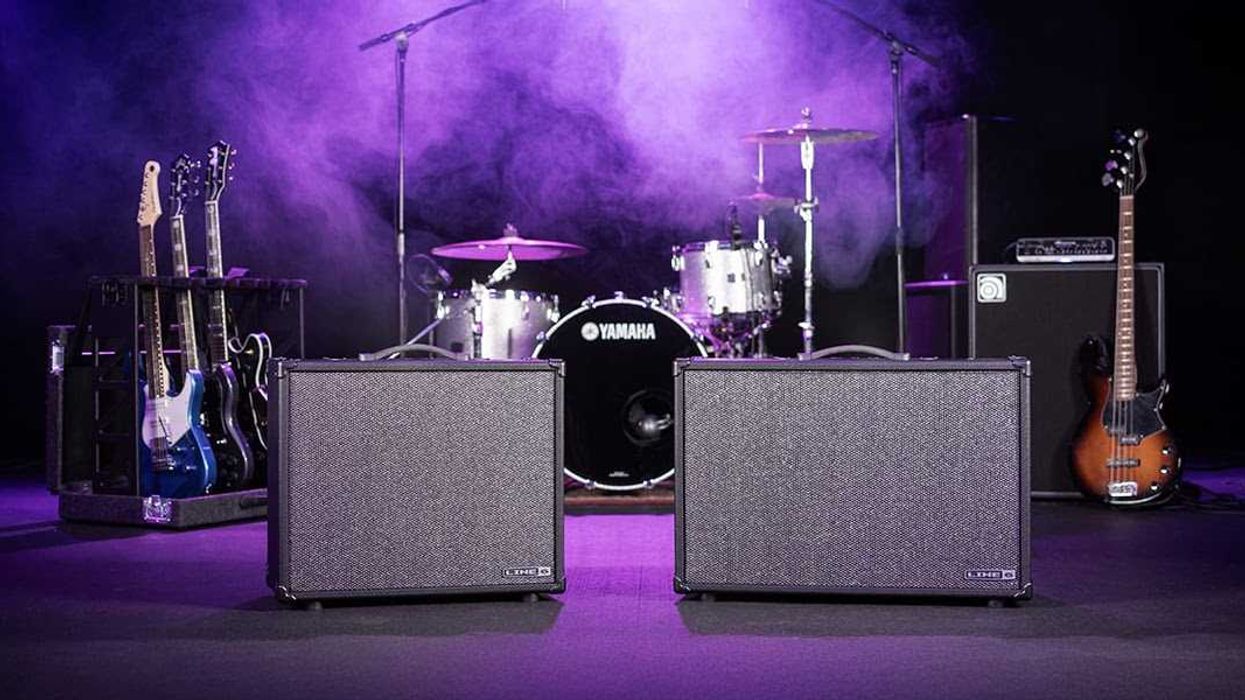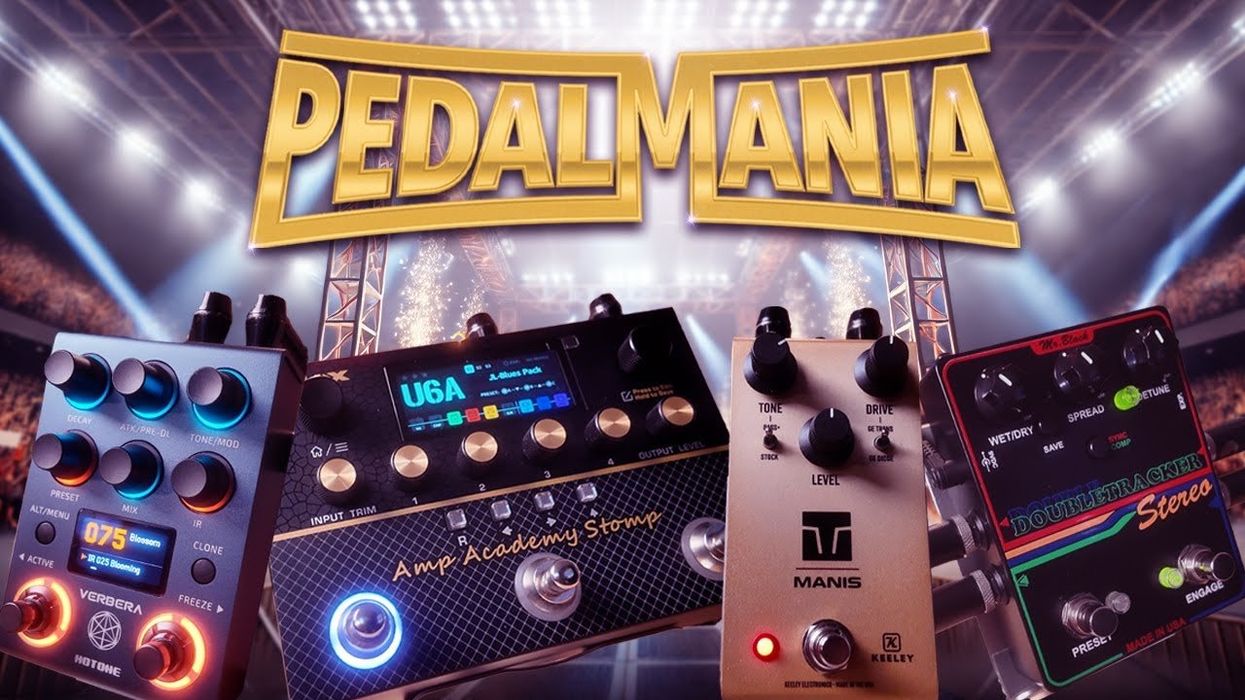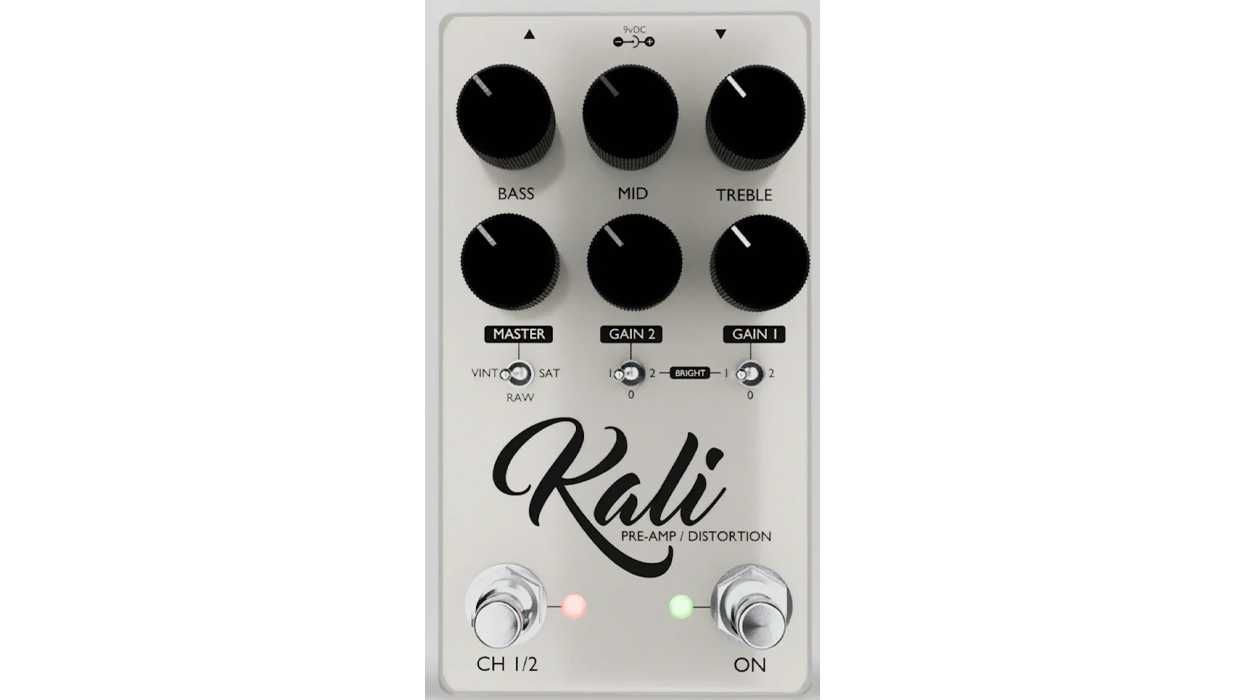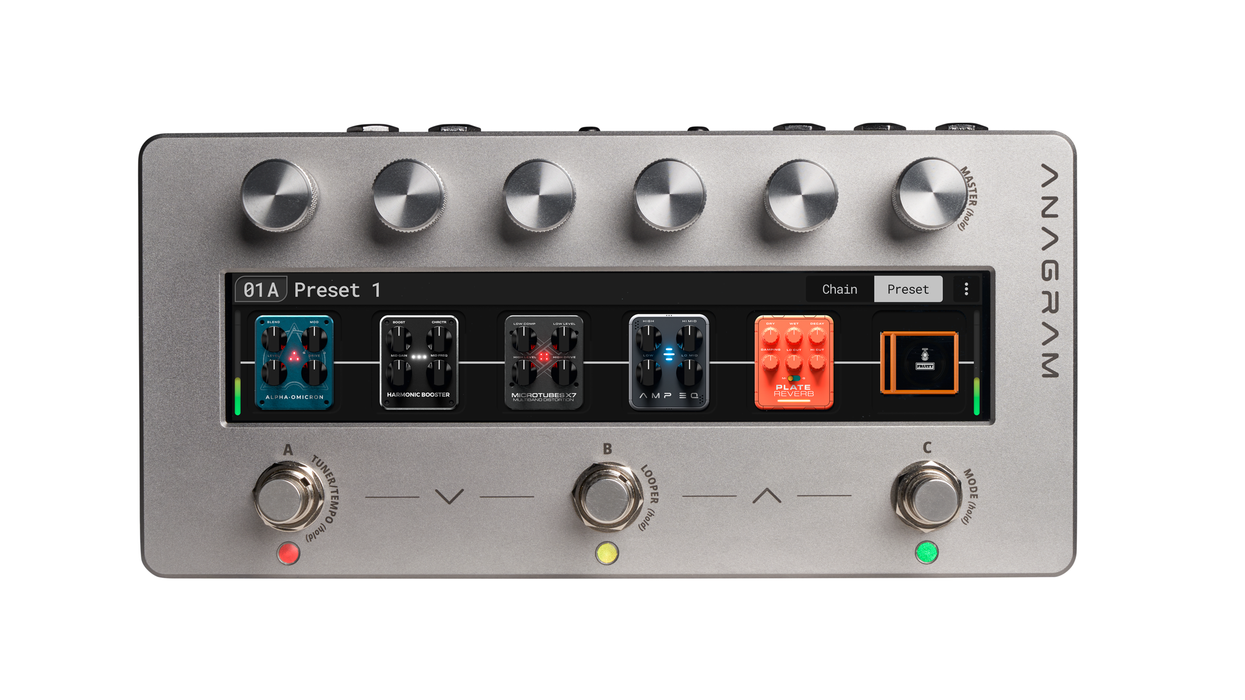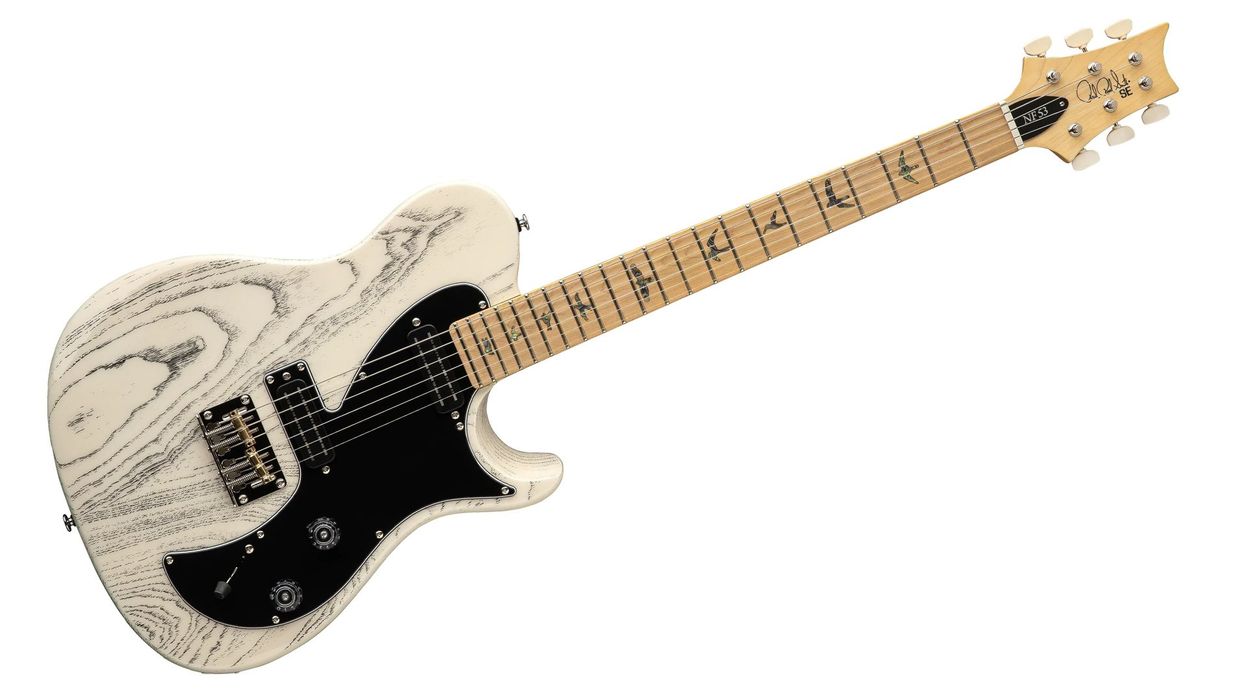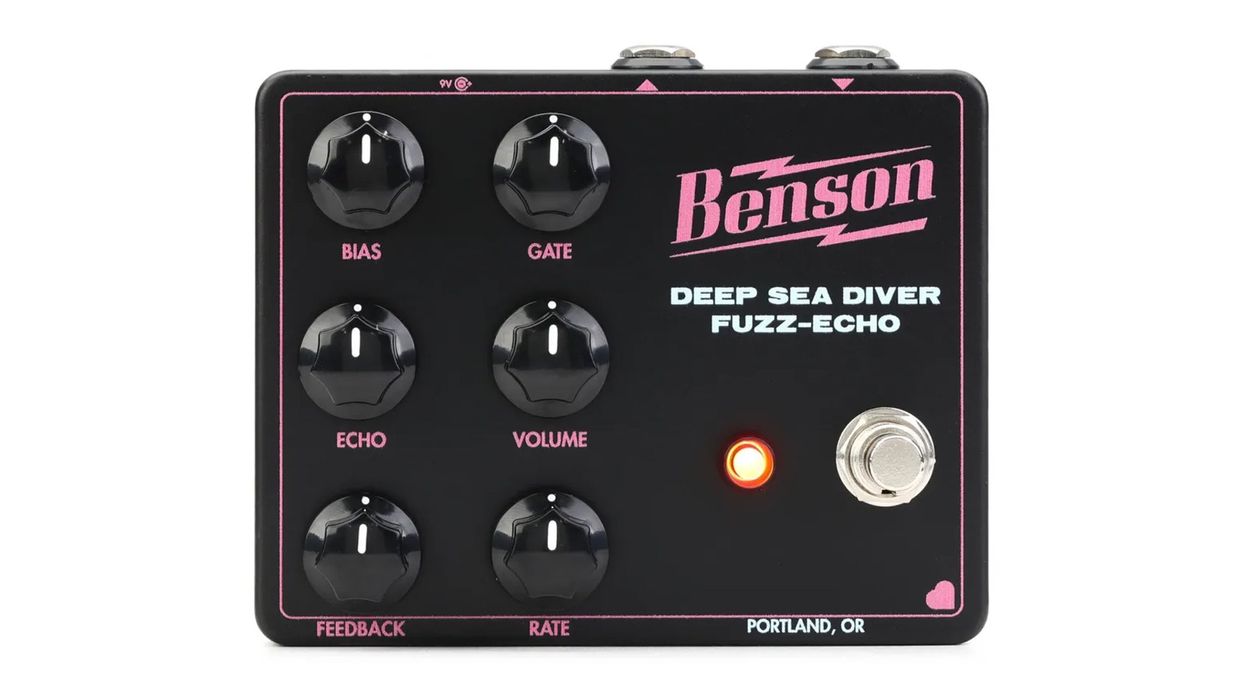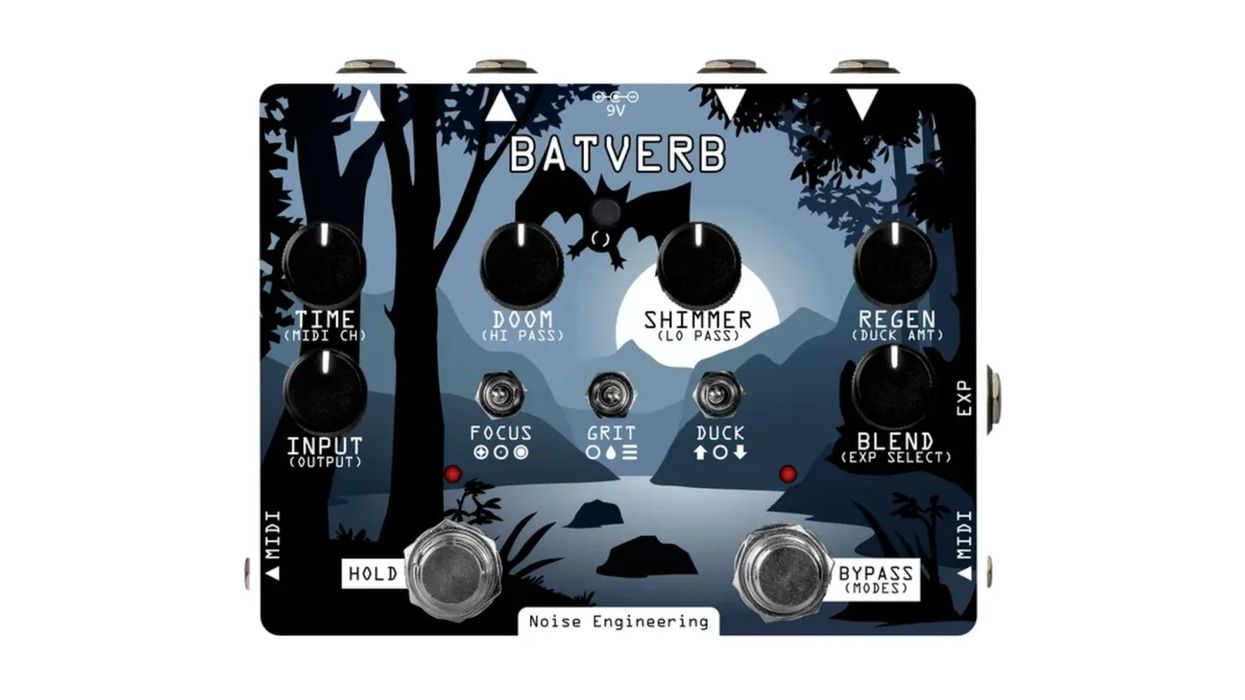Read on to see which debut tone toys of 2023 reaped Premier Gear Awards from our editors and expert reviewers!
DUNLOP Trigger Fly Capo (January 2023)
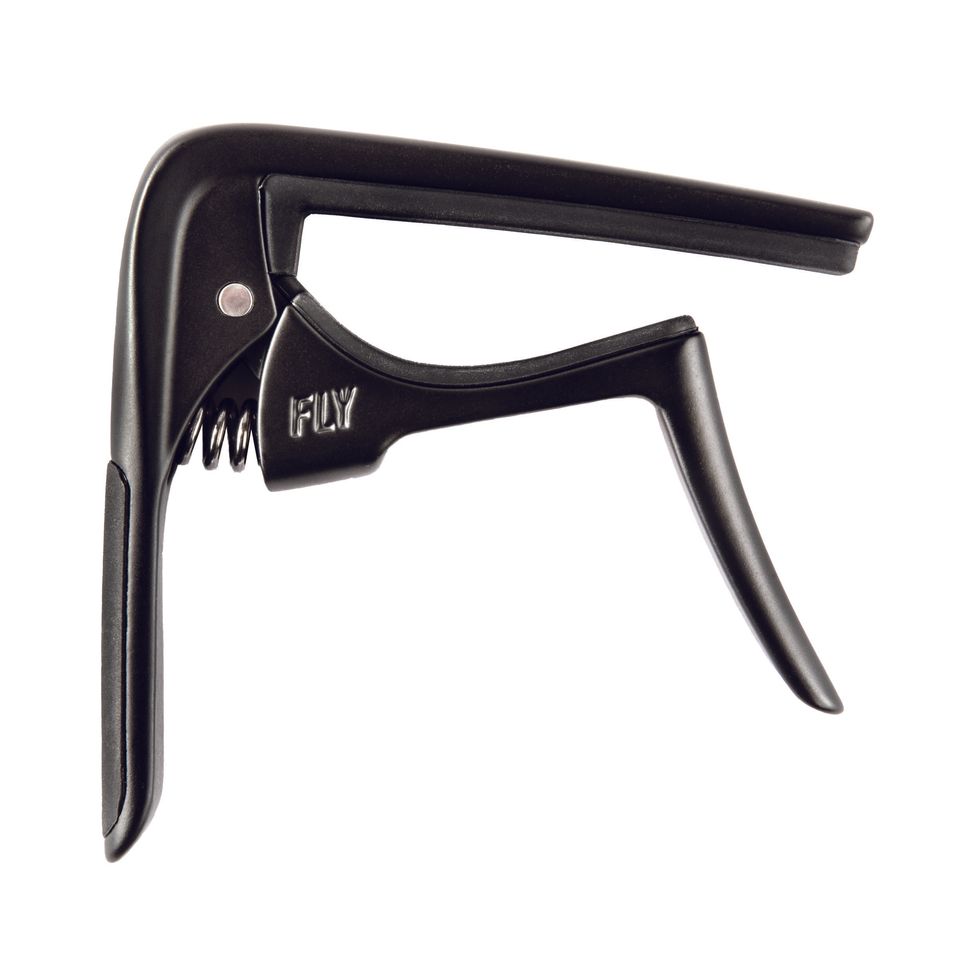
Trigger capos are often a performer’s best friend. They require just one hand to use, you can move them from fret to fret fast, and they tend to hold up well. Dunlop’s Trigger Fly capo is a beautiful evolution of the form. It has all the aforementioned advantages, but it’s also extra light, and squeezes with a just-right pressure that equals buzzless performance on most guitars, including 12 strings, and doesn’t knock your intonation sideways.
$20 street, jimdunlop.com
COPPERSOUND PEDALS x JACK WHITE Triplegraph (January 2023)
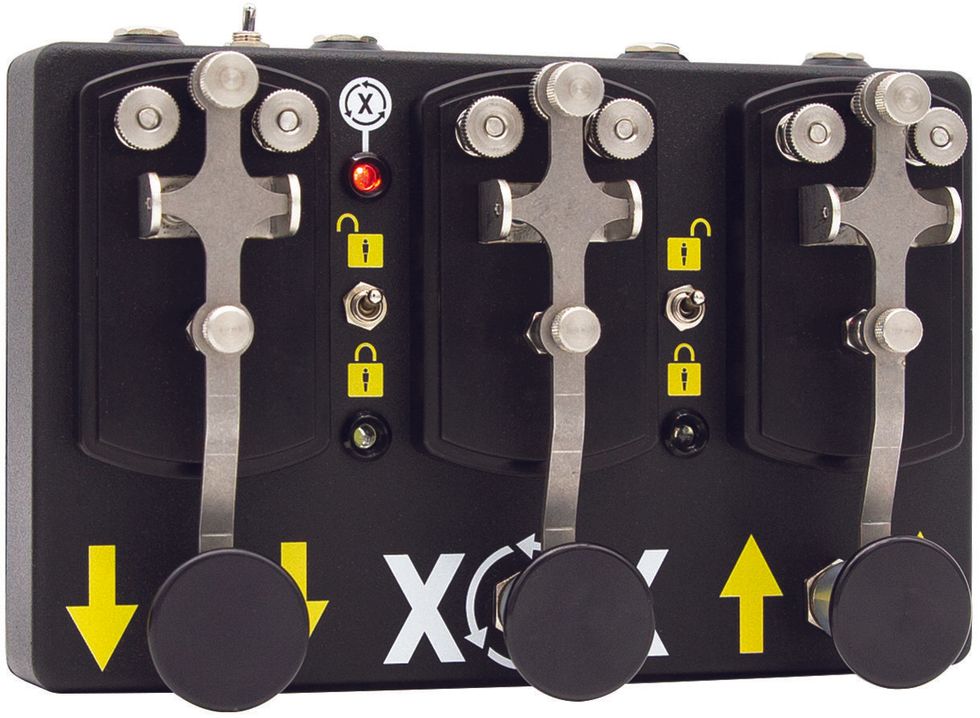
Third Man’s collab’ with CopperSound is a super-retro-inspired approach to an octave effect that’s unique in design and musicality. The premise is simple: Three telegraph keys control octave up, octave down, and a selectable kill switch or effect loop mode. That last option means you can give a momentary (or latching) tap to that key and activate whatever wild pedals you see fit to connect—a creative option sure to blow minds and open up a world of ideas.
$399, coppersoundpedals.com
Fender American Vintage II 1972 Thinline Telecaster (January 2023)

Underappreciated when first released, the second-generation Thinline Telecaster, which traded a traditional Tele’ single-coil set for two Seth Lover-designed Wide Range pickups, has since become a popular Fender family fixture in the Squier and Mexico-made Fender lines. The American Vintage II version not only marks a return to American construction, but the resurrection of cunife as material for the Wide Range’s magnets. Combined with a 1-meg volume pot, the cunife Wide Range units make the American Vintage II sound clear, lively, and beautifully large.
$2,499 street, fender.com
JACKSON AUDIO Silvertone 1484 Twin Twelve (January 2023)
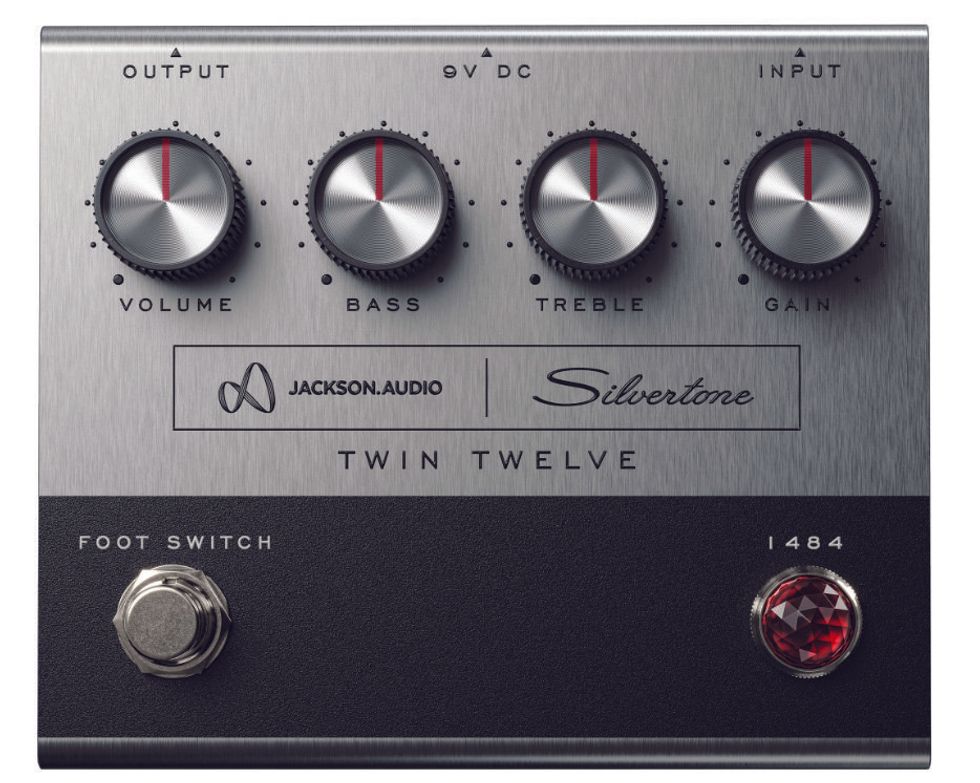
The retro flavors of Jackson Audio’s ode to a ’60s Silvertone are refreshing. This modern collaboration between Jackson and Silvertone adds a combination of thickness and edgy harmonic content that gives the pedal a unique character. Reviewer Dave Hunter even claimed that “with most decent tube amps it sounds better than many real Twin Twelves.”
$199 street, jackson.audio
ELECTRO-HARMONIXJ Mascis Ram’s Head Big Muff Pi(January 2023)
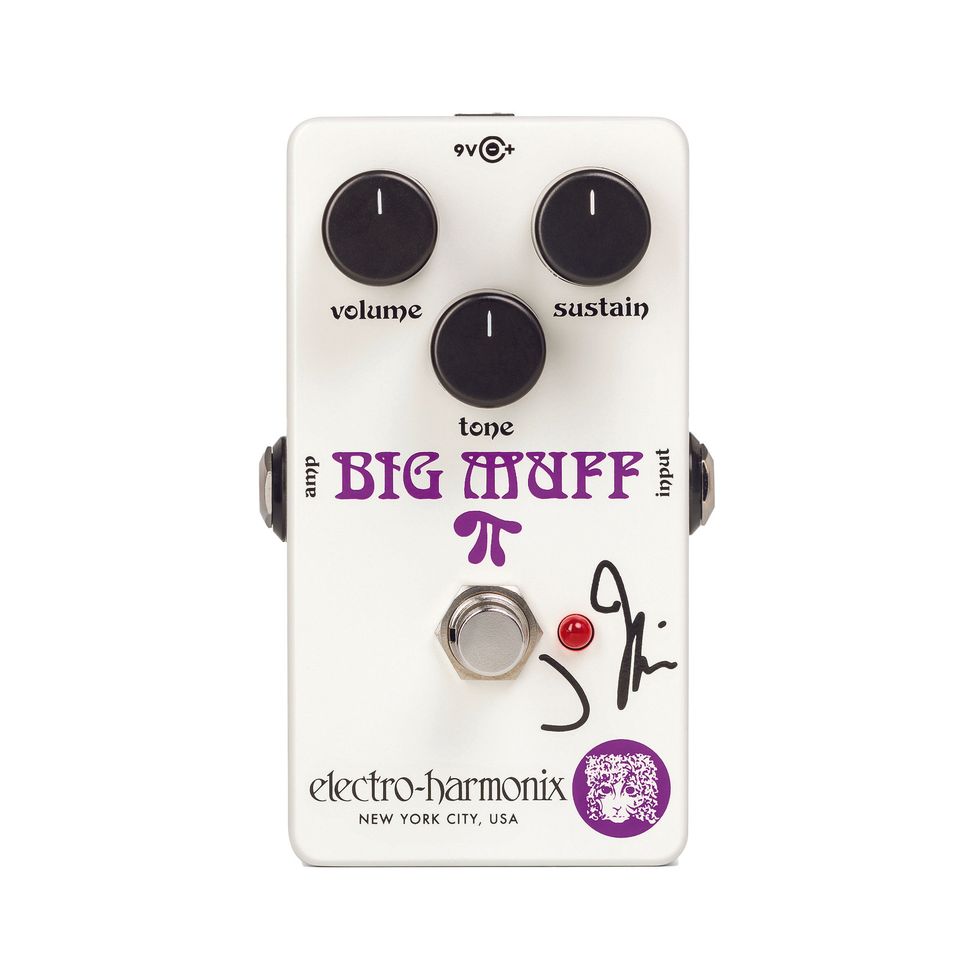
It’s no surprise that J Mascis, wizard architect of the henge-heavy Dinosaur Jr. sound, should be honored with a signature Big Muff. What’s nice is that this repackaging of the company’s Ram’s Head Muff will set you back just 132 bucks while wielding the weight and surprising airiness that characterizes vintage Ram’s Heads and enabling Mascis’ meld of melancholy pop melody and metal megatonnage.
$132 street, ehx.com
UAFX Woodrow ’55 (January 2023)
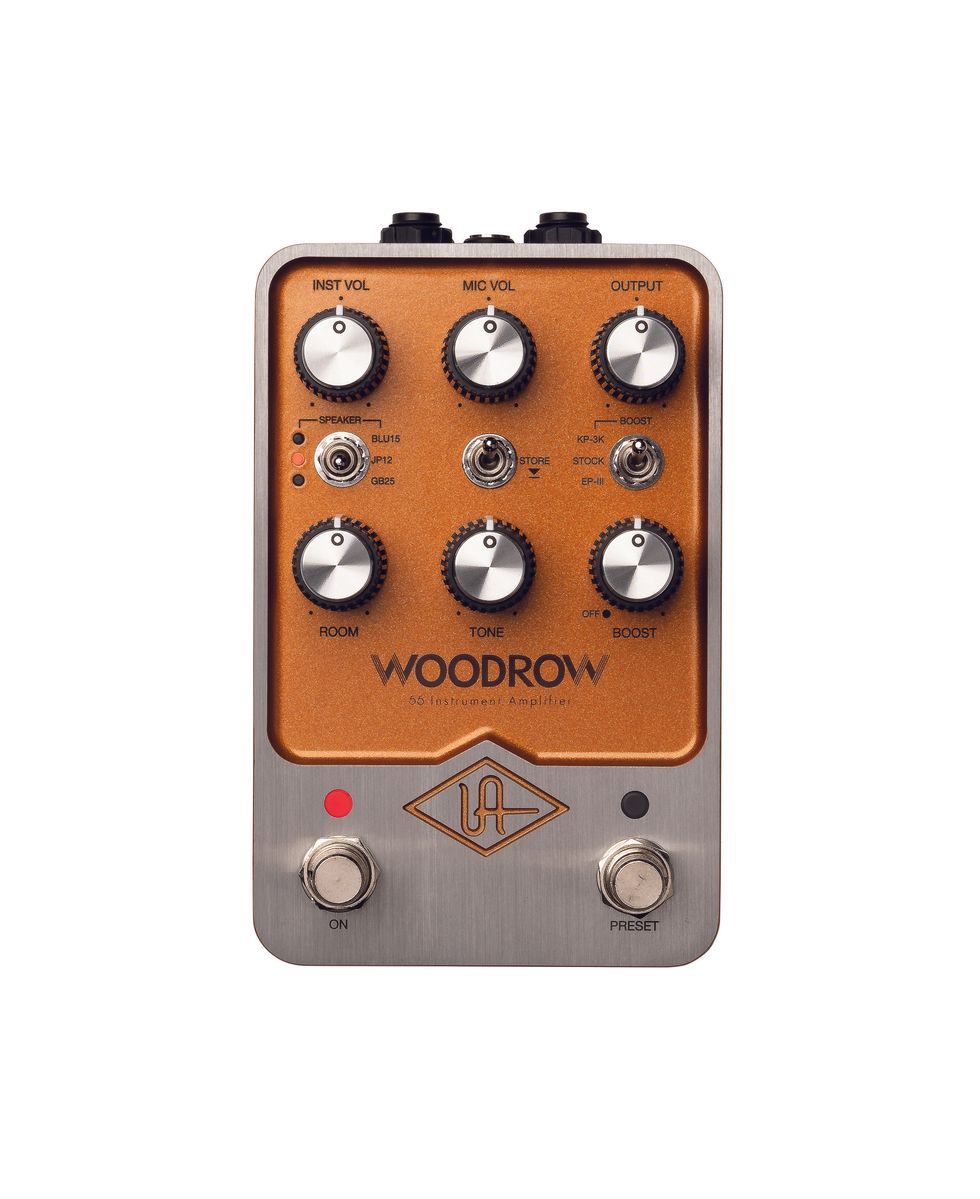
For all the demonstrable advances in amplifier modeling, there’s still a justifiable number of skeptics that don’t trust a digital gain source or an amplifier in a box. But one go with the Woodrow ’55 reveals a tactile, perceptible dynamism that could quell the skepticism of the most hardened tube-amp devotee. The sounds, meanwhile, range from thrillingly explosive to lively cleans. It’s not cheap, but it’s a fast track to tweed sound and feel when the real thing isn’t at hand.
$399 street, uaudio.com
D’ANGELICO Deluxe SS Baritone (February 2023)
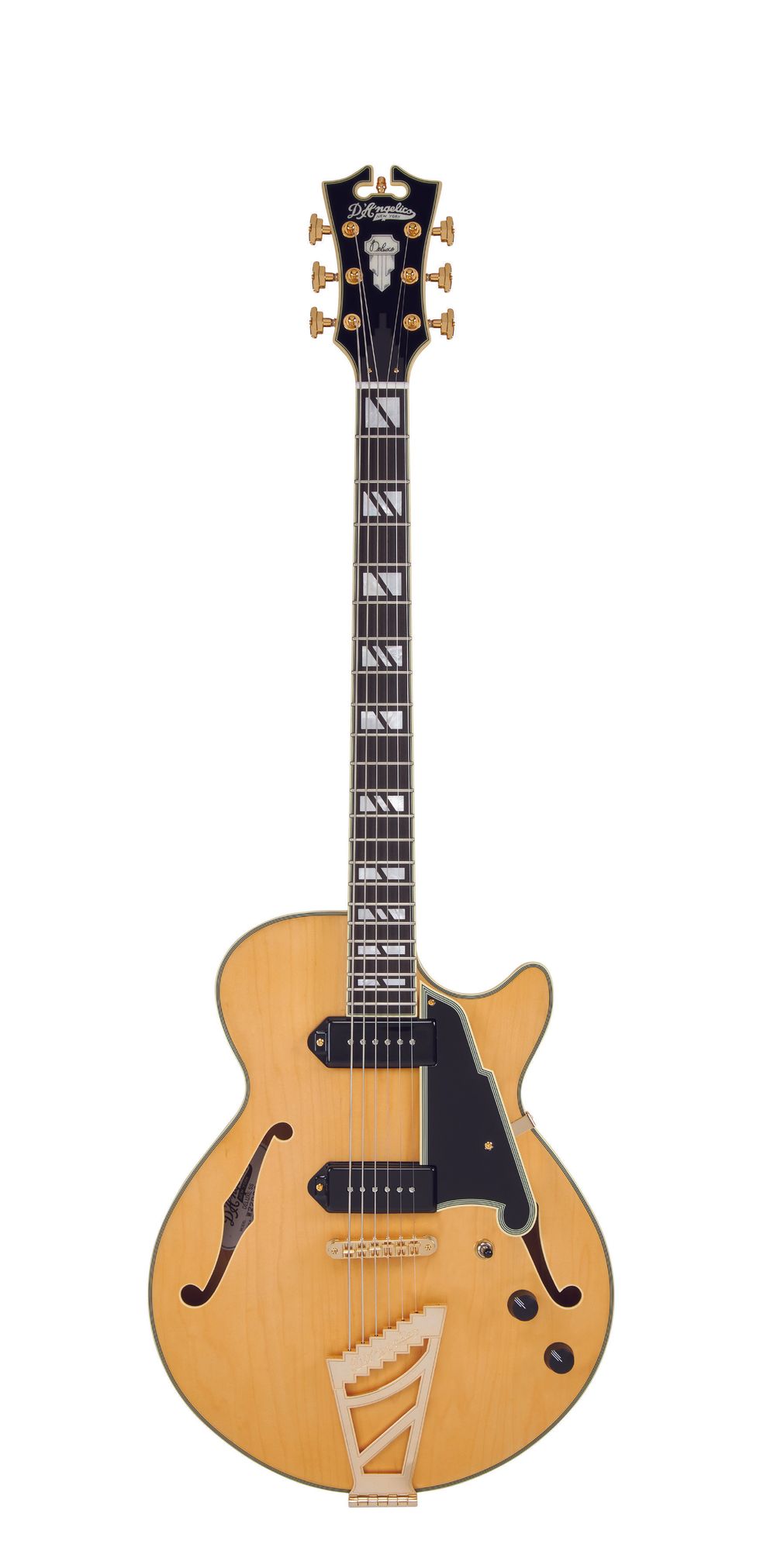
There aren’t many high-end offerings in the baritone guitar market, but the Deluxe SS Baritone is a great one. Its jazzy accouterments—semi-hollow archtop, glitzy gold hardware, oversized art deco headstock, mother-of-pearl block fretboard inlays—belie the rock ’n’ roll power that the Seymour Duncan P-90s deliver. Plus, its 26 3/4" scale length is comfy, and despite those heavy strings, it plays like a dream, no matter what style you seek to conjure.
$2,199, dangelicoguitars.com
WARM AUDIO Warmdrive (February 2023)
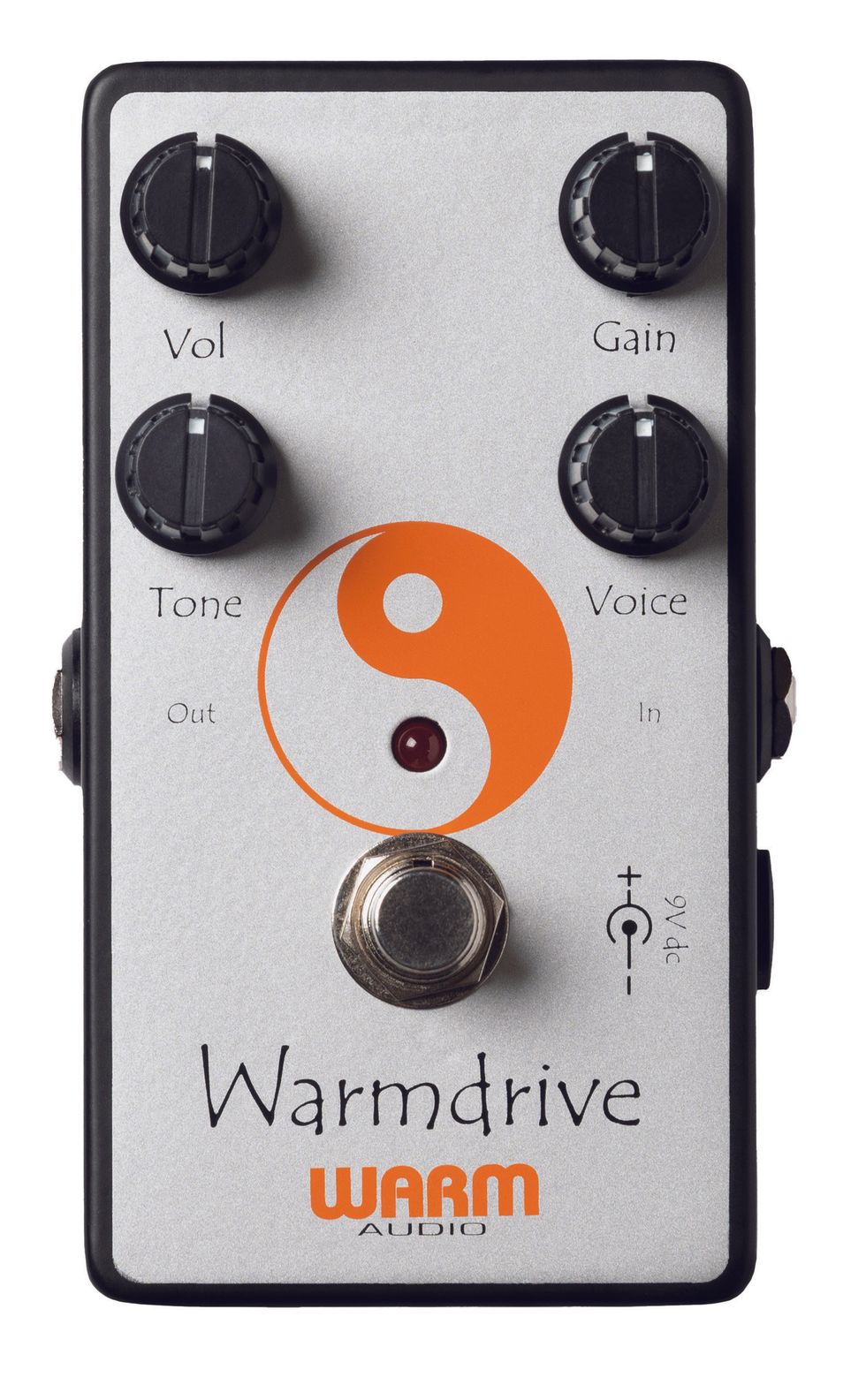
This inspired take on the famed Lovepedal/Hermida Zendrive was a standout stomp this year. Fans of Dumble-style pedals are no stranger to this type of circuit. The intuitive EQ control offers a more expansive range of sounds than a typical tone knob, and the build quality is hard to beat. At $150, it’s one of the most affordable paths to a sound that is financially out of reach for most of us.
$149 street, warmaudio.com
EPIPHONE Noel Gallagher Riviera (March 2023)
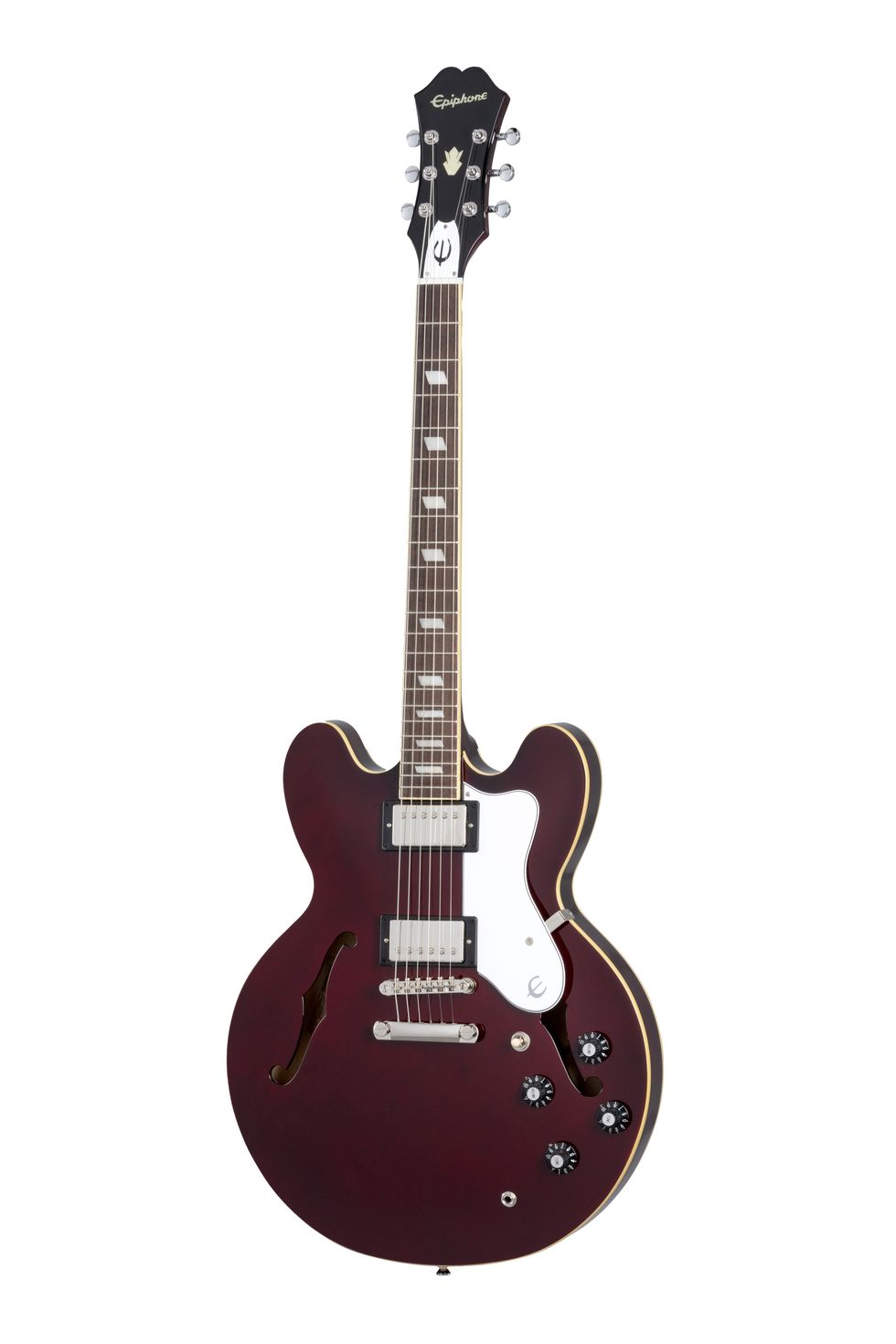
If you’re a guitar-pop fan of a certain age, images of Noel Gallagher with an Epiphone semi-hollow—not to mention his hooky-as-hell tunes—are probably seared into your brain. This Riviera, which honors a fave instrument from the (What’s the Story) Morning Glory? era, is a fab-feeling, fat-and-sparkly sounding semi-hollow that, for its ’80s Japan-made Riv’ specs, is also a pretty alternative to an ES-335.
$899 street, epiphone.com
MXR Super Badass Dynamic Overdrive (March 2023)
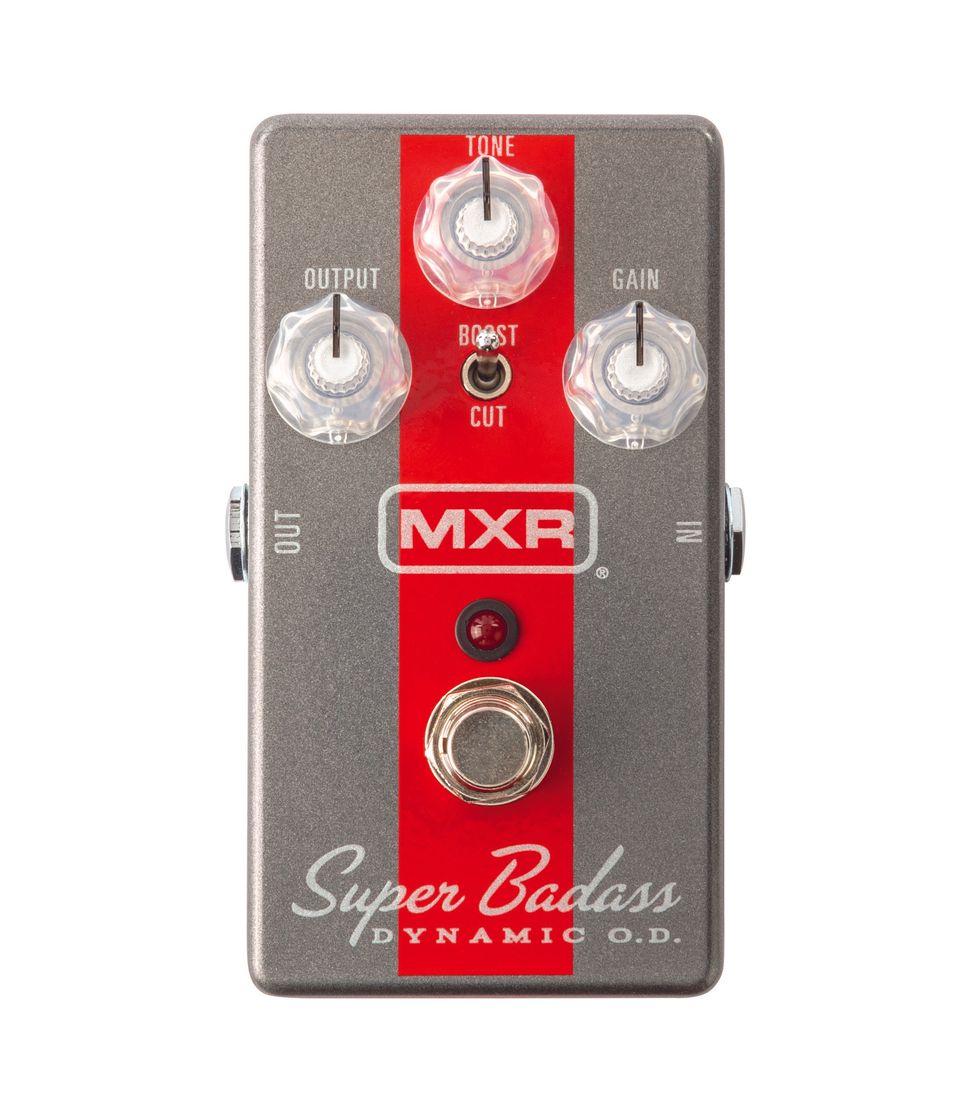
The Fulltone OCD was a lot of overdrive for not-too-much money. So potential customers got a scare when the demise of Fulltone fueled rumors of used-market gouging. But players willing to look past brand fixations should take solace in the existence of the Super Badass Dynamic Overdrive. This unabashed homage to the OCD is every bit as capable of the balance of dynamics, articulation, and aggression that distinguished its inspiration.
$129 street, jimdunlop.com
CATALINBREAD CB Series Distortion (March 2023)
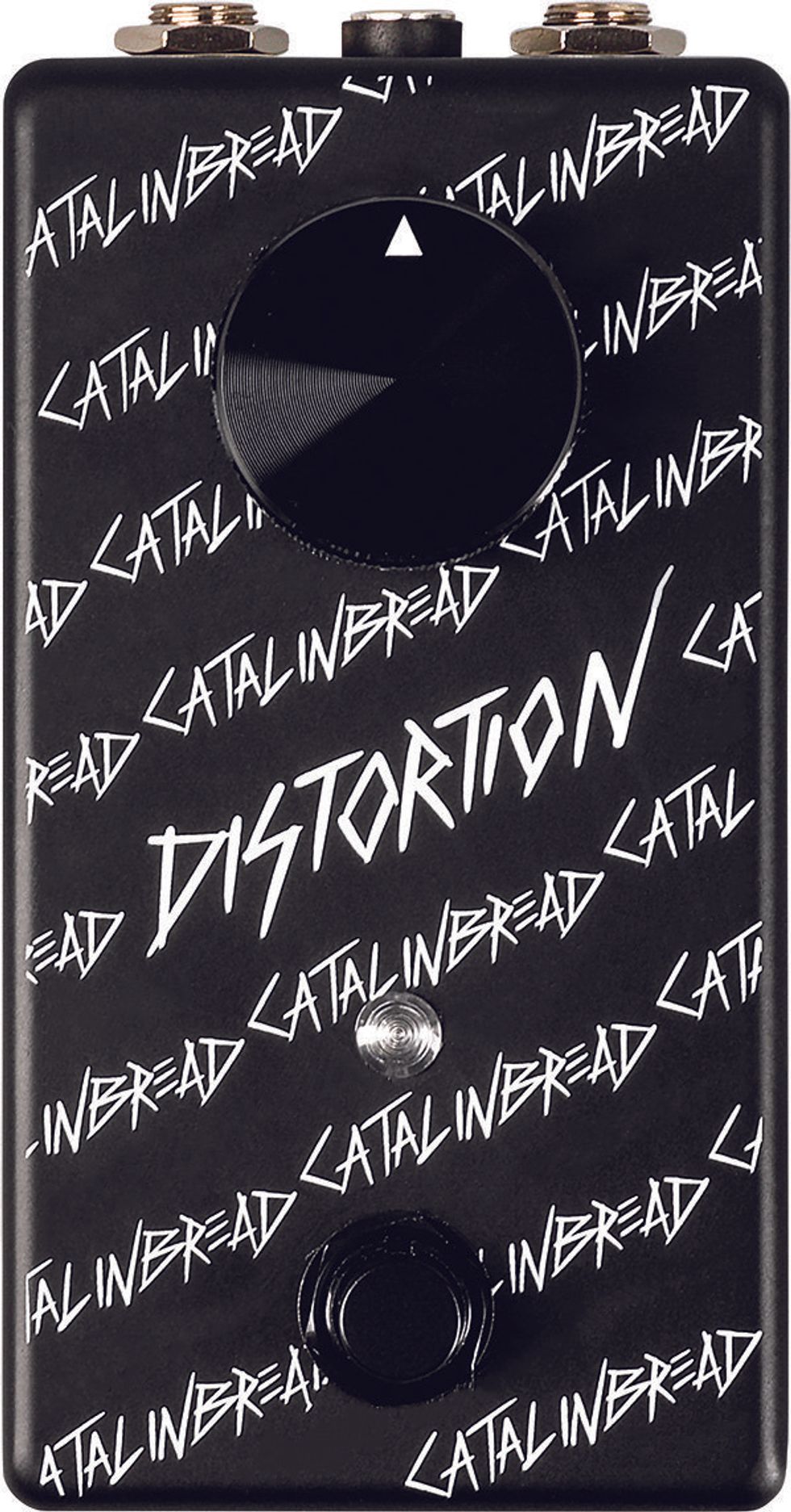
The CB Distortion, with its punky, brash attitude, is the pedal best suited to the CB Series’ ’80s skate-style graphics. It’s not without refinement, however. The midrange is rich and the top-end clarity lends definition to chords in high-gain situations. And the ample volume on tap enables dramatic dynamic effects when you switch it on. You really can’t beat the ease of use, either.
$150 street, catalinbread.com
ERNIE BALL MUSIC MAN Kaizen (April 2023)
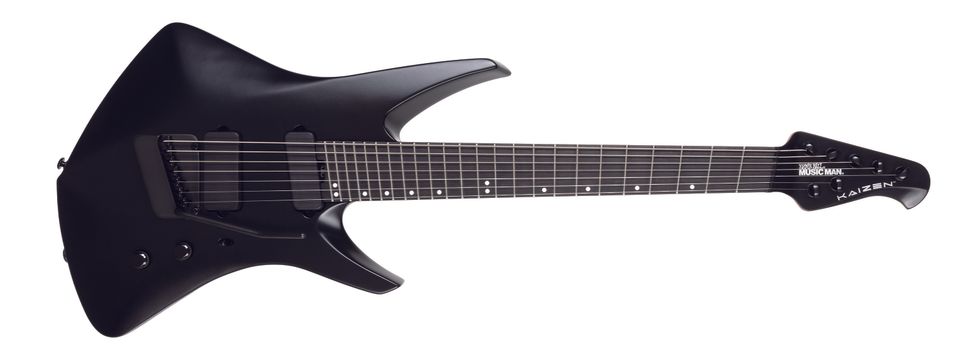
A collaboration with Tosin Abasi, the Kaizen is a sleek, futuristic 7-string that extends the boundaries of electric guitar design. Due to clean lines and a modern feel, the Kaizen is supremely playable and just plain fast. It’s not a surprise what type of music the Kaizen is made for, but its versatility extends well beyond that.
$3,999 street, music-man.com
MESA/BOOGIE Badlander 25 (April 2023)
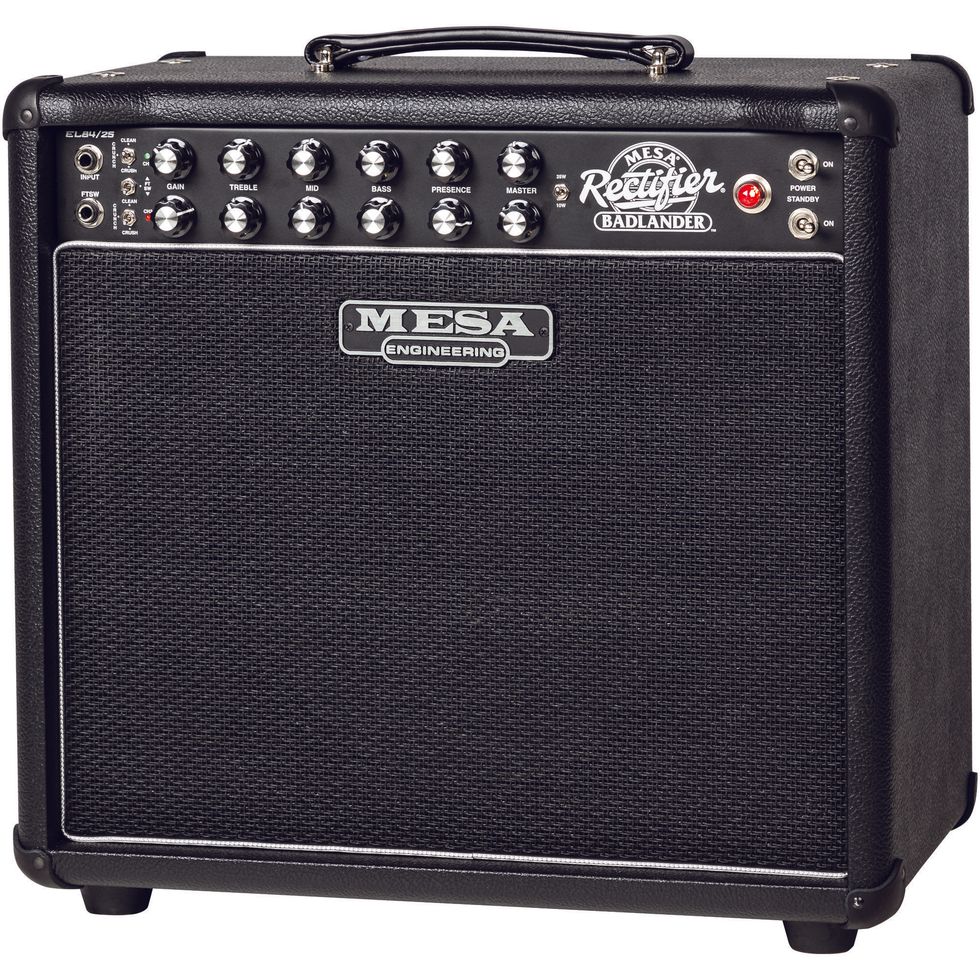
This Boogie features ready-to-rock Rectifier Series preamp stages in both of its two channels. It’s packed in a compact 25-watt 1x12" combo format and fired by a pair of EL84s. That formula produces tones reminiscent of its Boogie siblings, while yielding a unique personality with Vox-like flavor. Built-in CabClone IRs deliver robust big-cab tones for front-of-house or recording needs, rounding out the Badlander’s impressive combination of versatility, convenience, and power.
$1,849, mesaboogie.com
DANELECTRO Longhorn Baritone (April 2023)
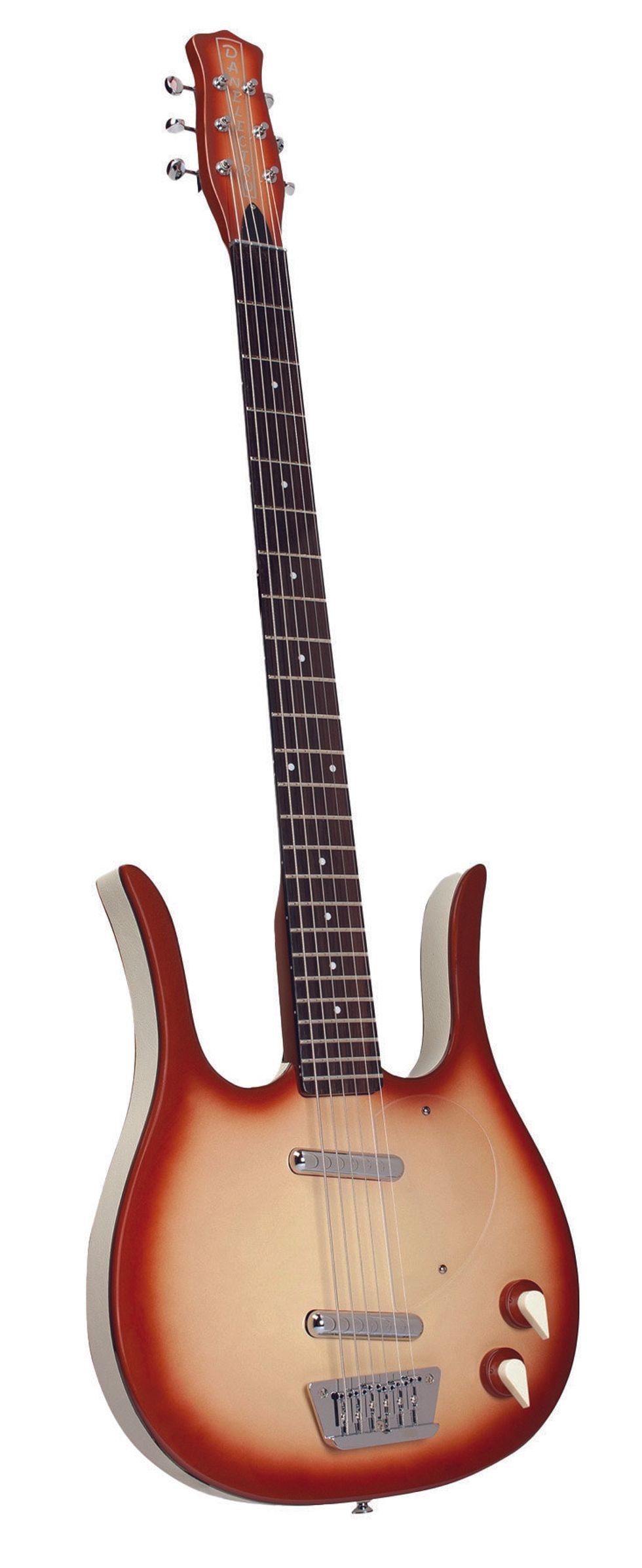
Dano’ has reunited the very en vogue baritone configuration with its timeless and super-stylish lyre body, and you’d be hard-pressed to find a baritone with more stage presence, or one that’s more fun. The adjustable bridge makes intonation easy (no small consideration on a baritone). And while the lipstick pickups are hotter than vintage Dano pickups and lack a little of that sweetness, you can still shape lovely, contoured tones to fill the unique harmonic slot baritones occupy so very well.
$569 street, danelectro.com
TWASH9 Scott Henderson Signature Distortion (May 2023)
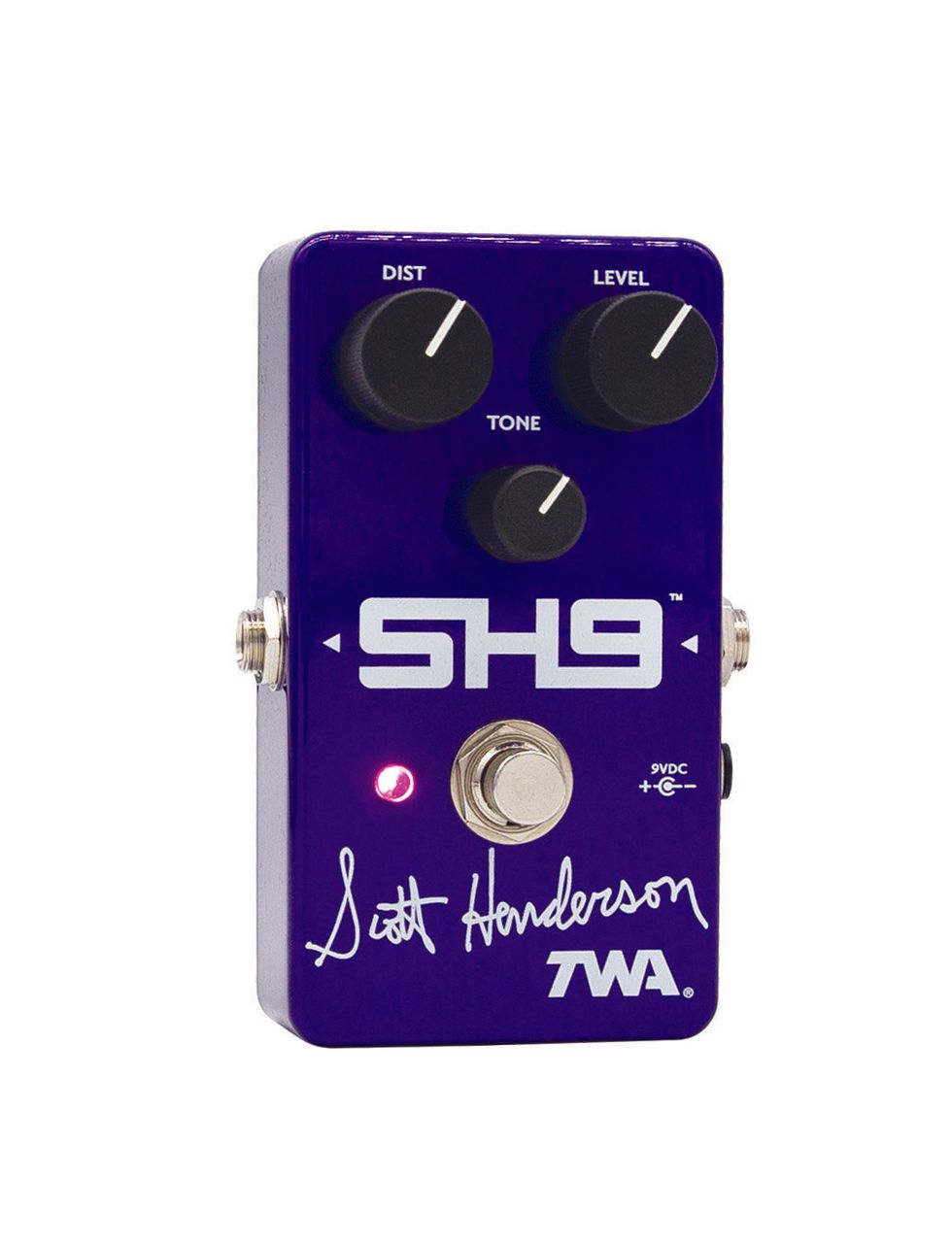
The original Ibanez SD9 was a misunderstood and underrated distortion. But it was a perfect match for fusion master Scott Henderson’s articulate, precise, and heavy style. Both Henderson and the SD9 are well honored by this high-quality interpretation of the Ibanez original, and Mr. Susumu Tamura, who designed the TS9 and SD9 for Ibanez, even lent a guiding hand in putting this pedal together. The results are not only a super-high-quality distortion, but a clear, present, and muscular one too.
$299 street, godlyke.com
SOLDANO SLO Pedal (May 2023)
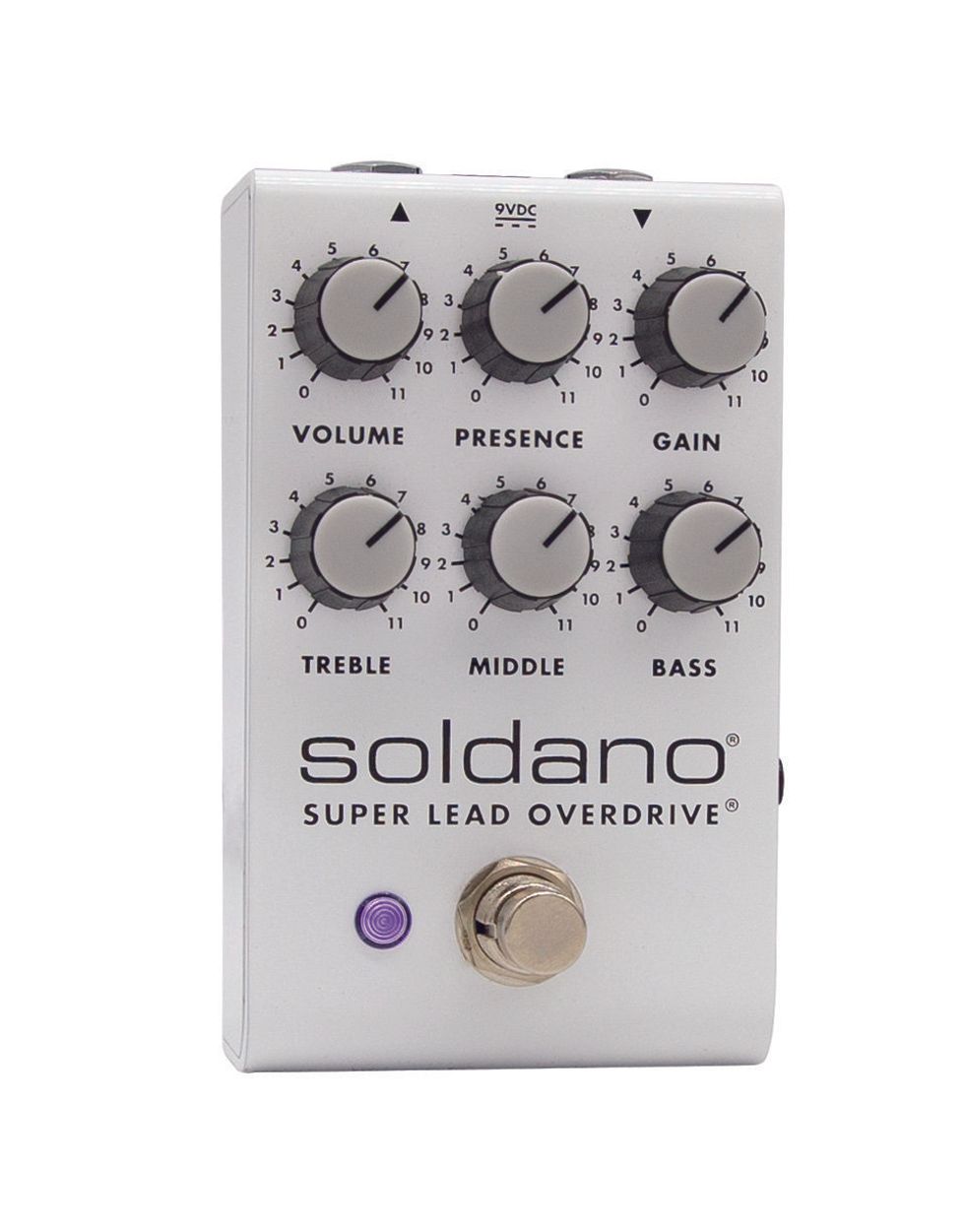
The Soldano SLO-100 amplifier rose to legendary status courtesy of players such as George Lynch, Eddie Van Halen, and Mark Knopfler. While it’s hard to port the intangible feel of any amp into a small pedal, the SLO Pedal does an impressive job capturing that essence, offering amp-style drive, wooly fuzz, and lots of clean headroom at a fraction of the price.
$229, soldano.com
TWO NOTES ReVolt Guitar (May 2023)
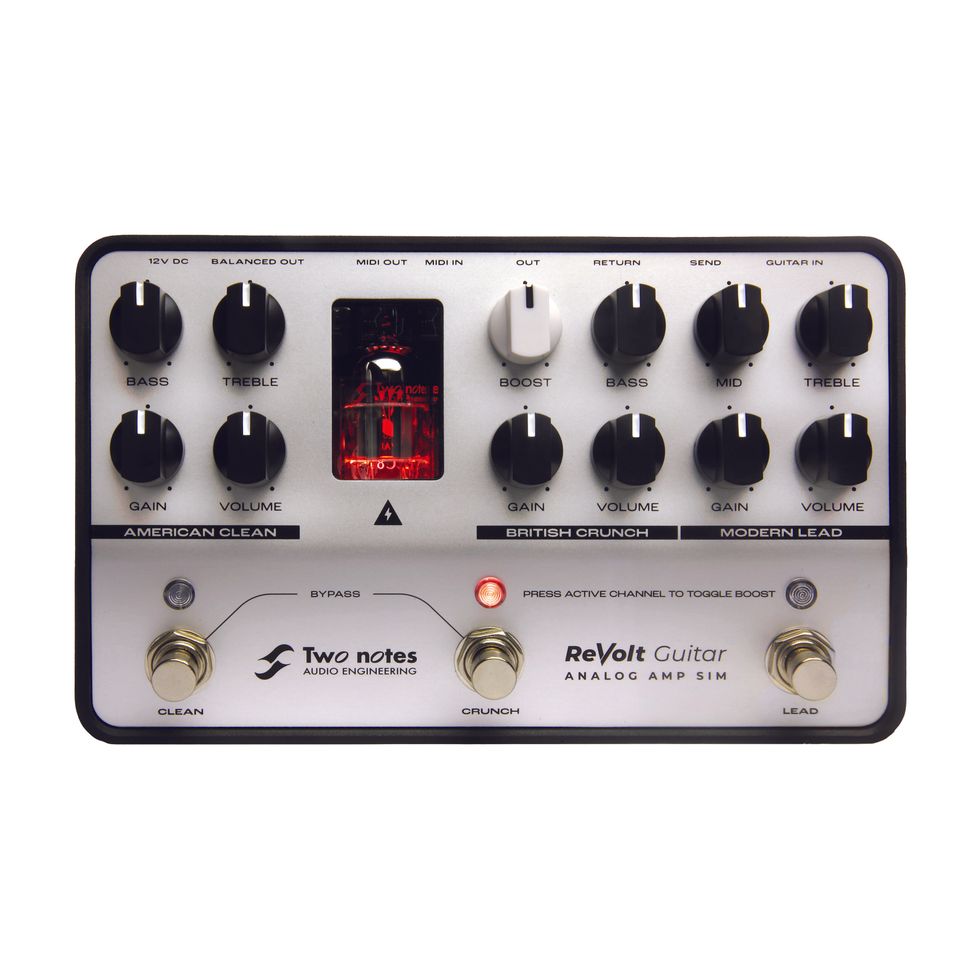
This tube-driven, 3-channel preamp with analog cabinet emulation is intuitive and easy to use. Clean, crunch, and lead channels cover a wide range, offering glassy Bassman 100 emulation and hot-rod Marshall drive, as well as SLO-100-style tones. If you prefer your own drive pedals, it’ll handle those with ease, and the compact 7" x 4.5" x 3" size means it shouldn’t be hard to find space for it on your ’board.
$399, two-notes.com
BAD CAT Black Cat (May 2023)
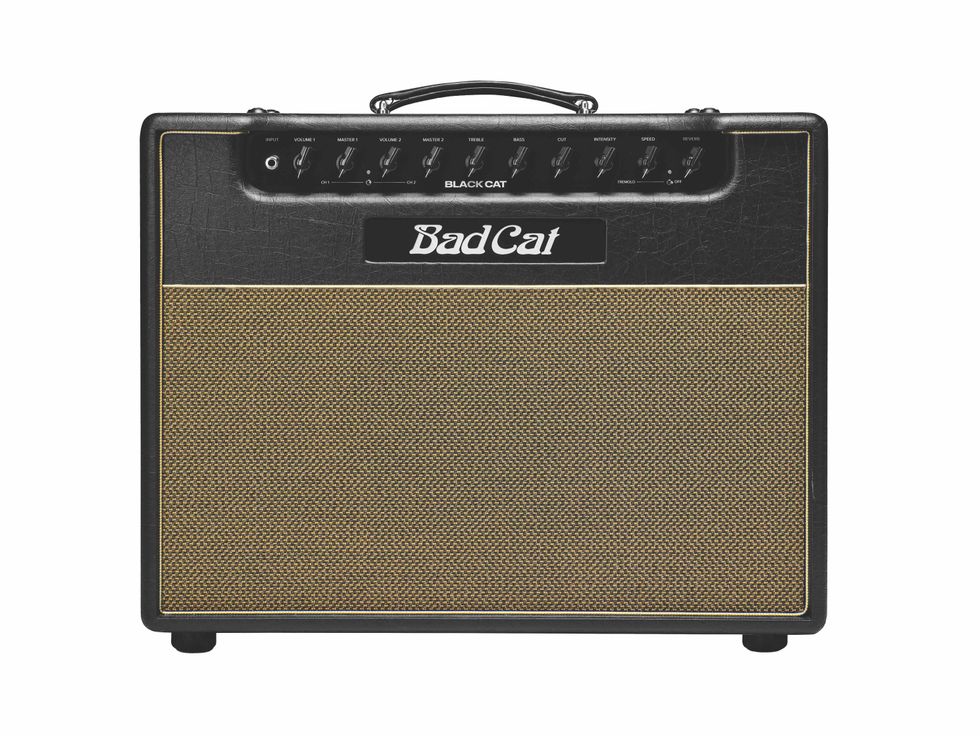
There’s a new Cat in town—and it’s a bit different from older siblings. There’s no illuminated cat eyes in the logo plate, and no EF86 preamp tube in the circuit, either, and it’s 20 watts with a solid-state rectifier and a digital reverb, rather than earlier models’ all-tube architecture. But this kitty roars like a tiger, providing British textures outside of the Vox and Marshall realms, with lots of range in the lead channel, especially, and offering plenty of volume, headroom, and versatility.
$2,099 street, badcatamps.com
PRS DGT SE (May 2023)
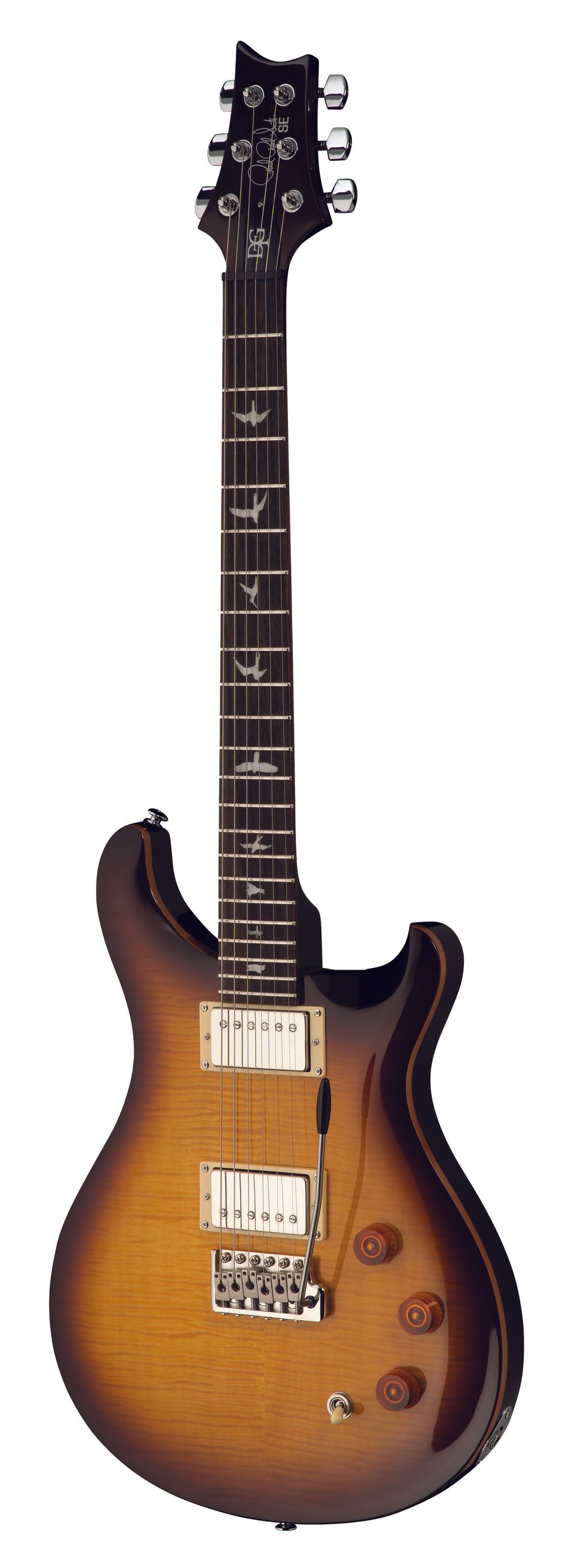
Could this be the best sub-$1,000 guitar on the market today? Reviewer Jason Shadrick thinks so. David Grissom’s signature PRS is one of the company’s most popular models, so the move to an SE version felt natural. The low-output pickups are bold and clear, and the push/pull coil tap gives more Gretsch vibes than straight up single-coils. This is a most welcome option for players with real-world budgets.
$859 street, prsguitars.com
FENDER Gold Foil Jazzmaster (June 2023)
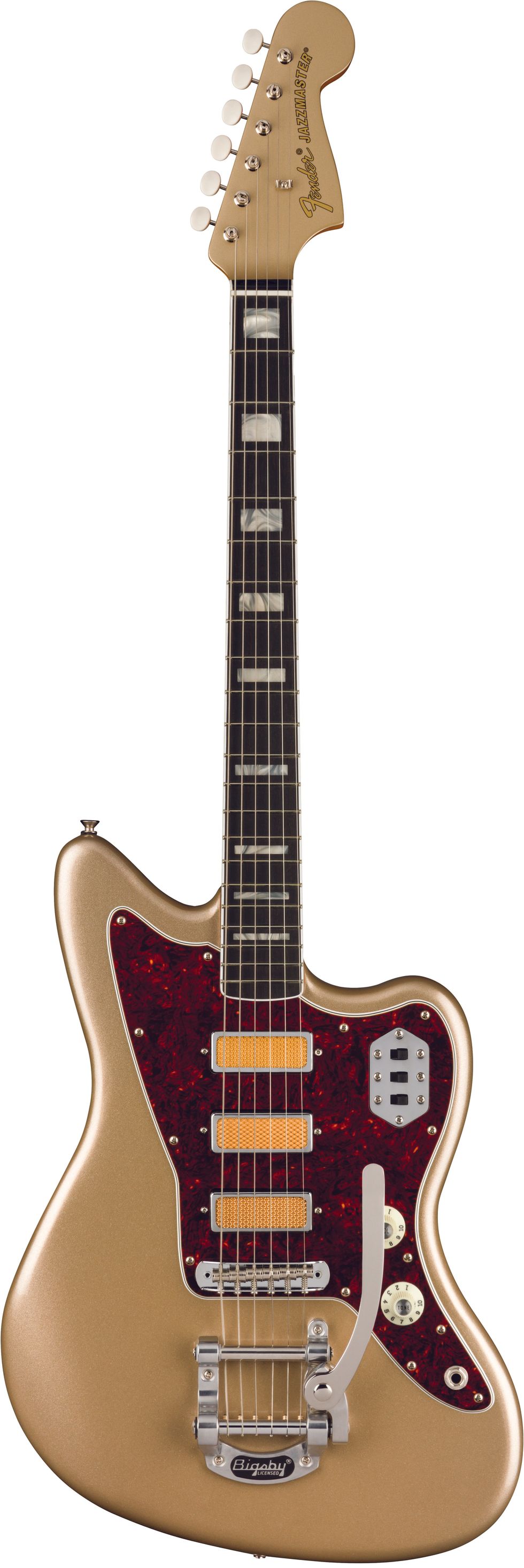
It’s hard to imagine a platform more perfectly suited to the mid-century flash of a gold-foil-style pickup than the graceful Jazzmaster. The pickups here aren’t real gold-foils. They’re alnico-based humbuckers in gold-foil clothing. But they are versatile—spanning hot-Stratocaster pickup sounds, and PAF and Rickenbacker Hi Gain tonalities. The mahogany body, Bigsby, and Jaguar-style switching all help make this beautiful mutation a cool alternative to the traditional Jazzmaster template.
$1,399 street, fender.com
GREAT EASTERN FX CO.Focus Fuzz (June 2023)
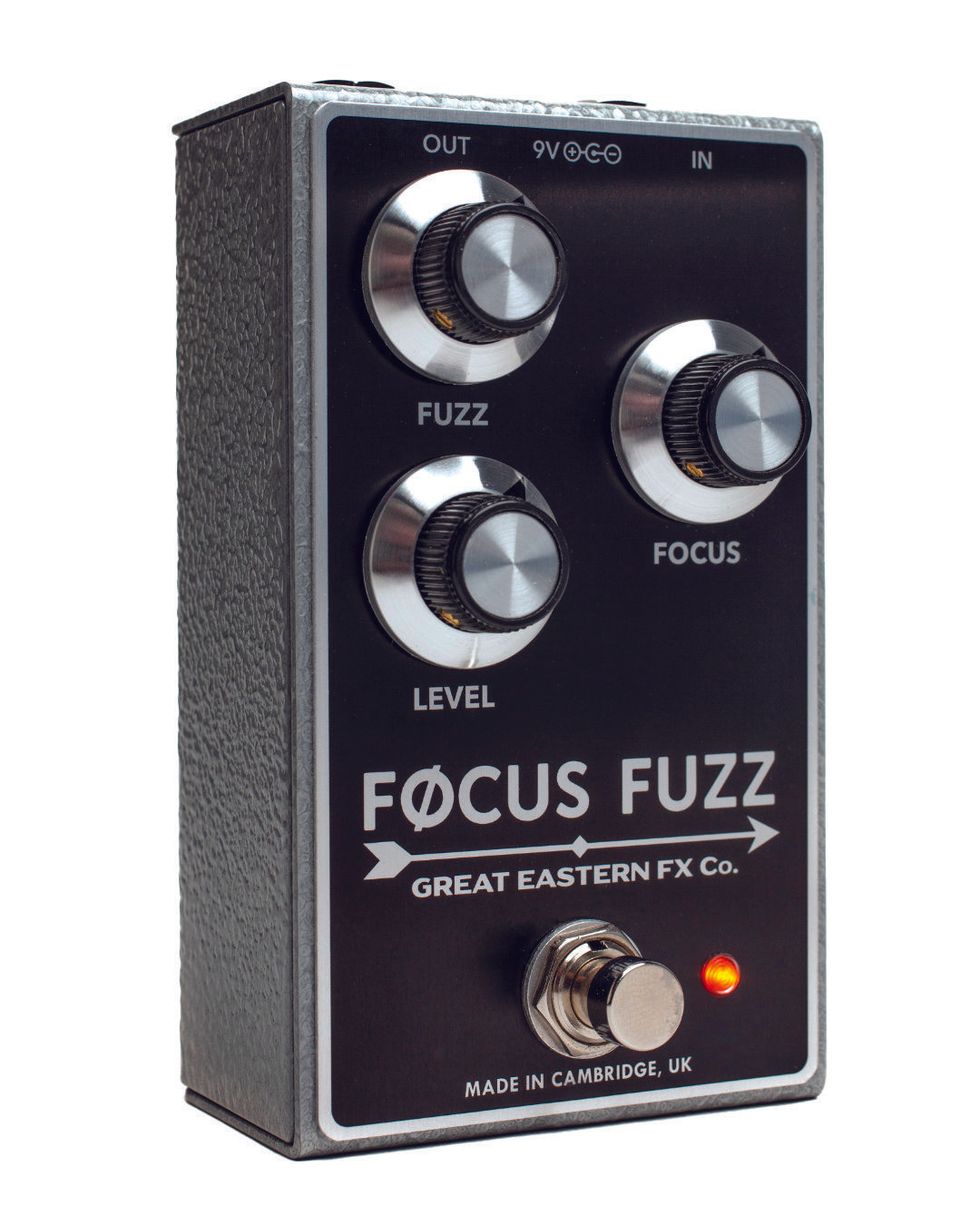
Focus Fuzz designer David Greeves describes the sound of his latest pedal as something between a Tone Bender, a Fuzz Face, and a Dallas Rangemaster. That might seem too good to be true to vintage fuzz heads. But, indeed, the Focus Fuzz manages a Fuzz Face’s open, bassy qualities, the fierce metallic edge of a Tone Bender, and, at low-gain settings, the response of a Rangemaster. The quality is exceptional, and the controls interact in cool ways that yield beautifully complex vintage fuzz textures.
$285 street, greateasternfx.com
MESSIAH Flare Ring Boost(July 2023)
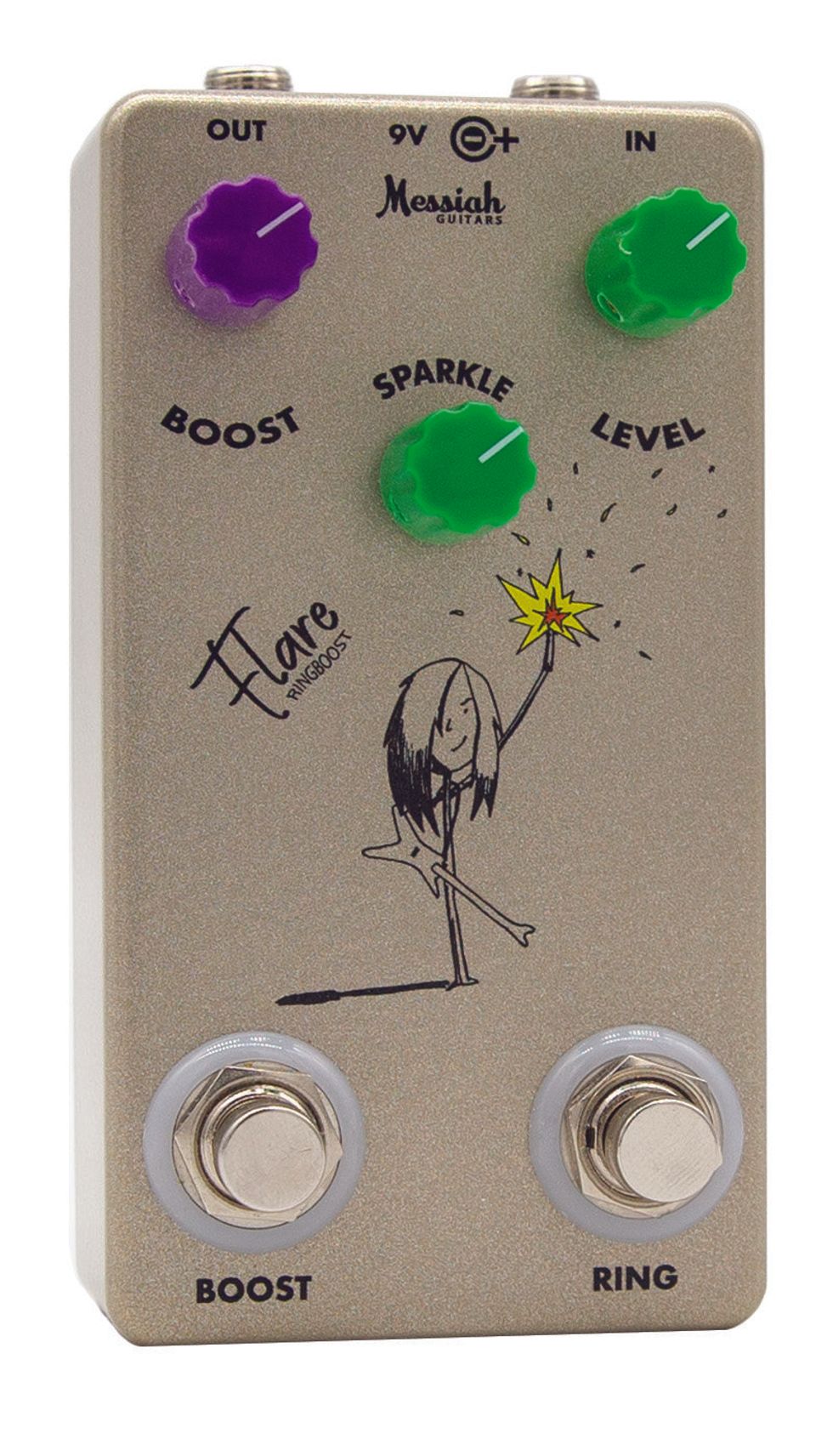
This octave-up fuzz and ring modulator honors not only the Dan Armstrong Green Ringer, but an improvement of that circuit by B.Y.O.C. called the Armstrong Twin. A tone knob and boost significantly extend the functionality and sound palette, when compared to the old Dan Armstrong unit. And in practice, it’s dynamic, sensitive, expressive, and surprisingly varied. If you typically fear the harsh side of octave fuzz, you might find a friend in the Messiah Flare Ring Boost.
$199 street, messiahguitars.com
ANANASHEAD Cream Amp (July 2023)
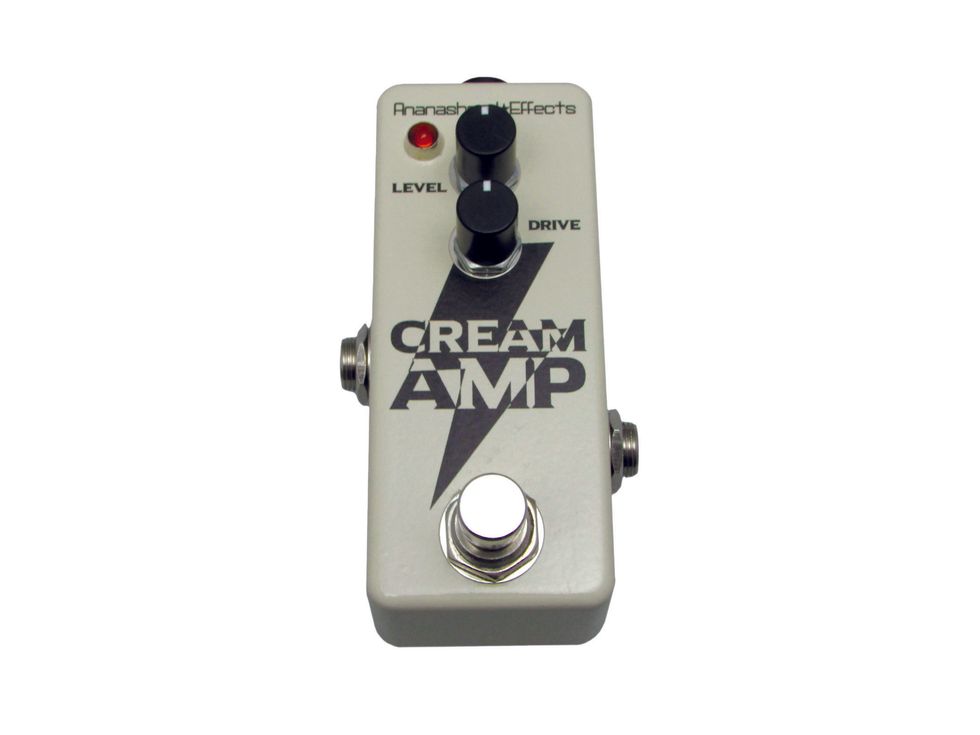
The original Electra Distortion is one of those sleeper vintage classics that you hear little about, in spite of its simple, straight-ahead brilliance. It also serves as a jumping off point for many new designs, like the Ananashead Cream Amp. This small, streamlined, Barcelona-built, low-to-mid-gain distortion is touch sensitive, shines with humbuckers, and generates a broad span of lively dirt sounds that are full of character without being in your face.
$125 street, ananashead.com
FISHMAN AFX Pro EQ Mini (July 2023)
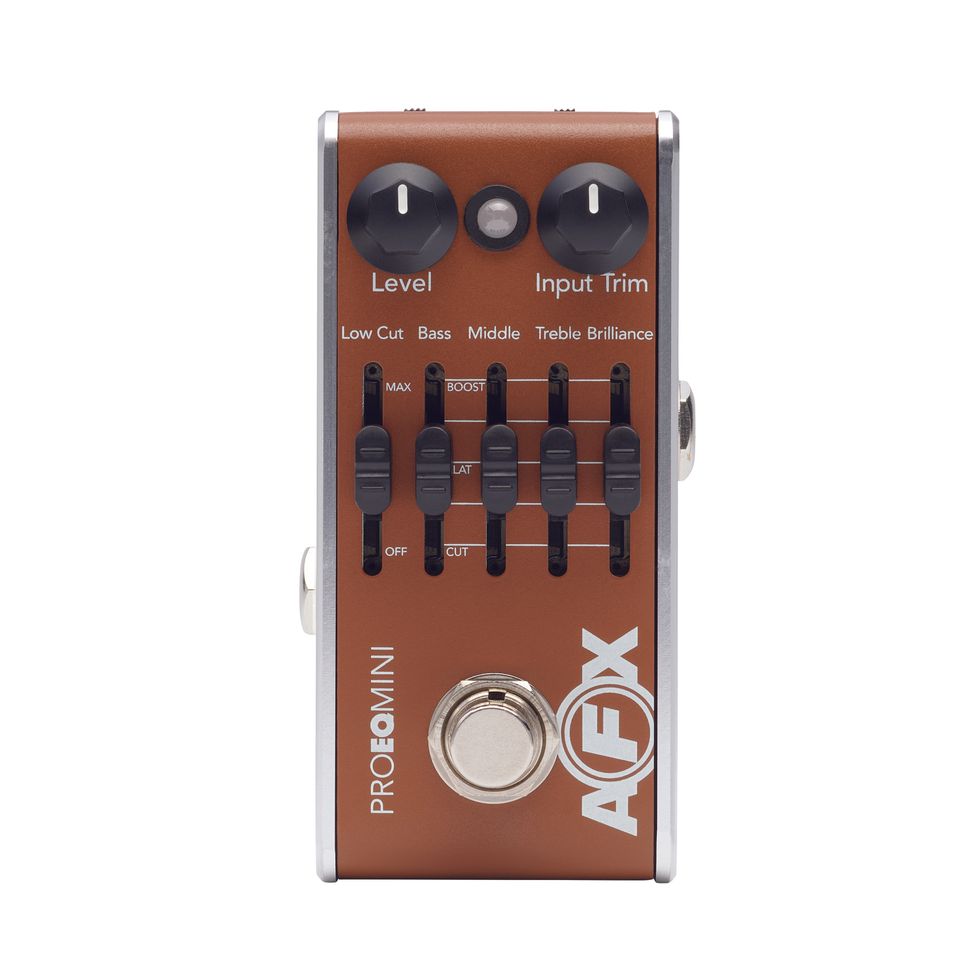
It may not look glamorous, but the $119 AFX Pro EQ Mini is a pedal that’s likely to earn back that investment fast. It’s super easy to use, highly utilitarian, and potentially invaluable for any performing acoustic player. But it can just as easily help craft unique, creative, and unorthodox acoustic textures in the studio or onstage.
$119 street, fishman.com
TAYLOR 417e (July 2023)
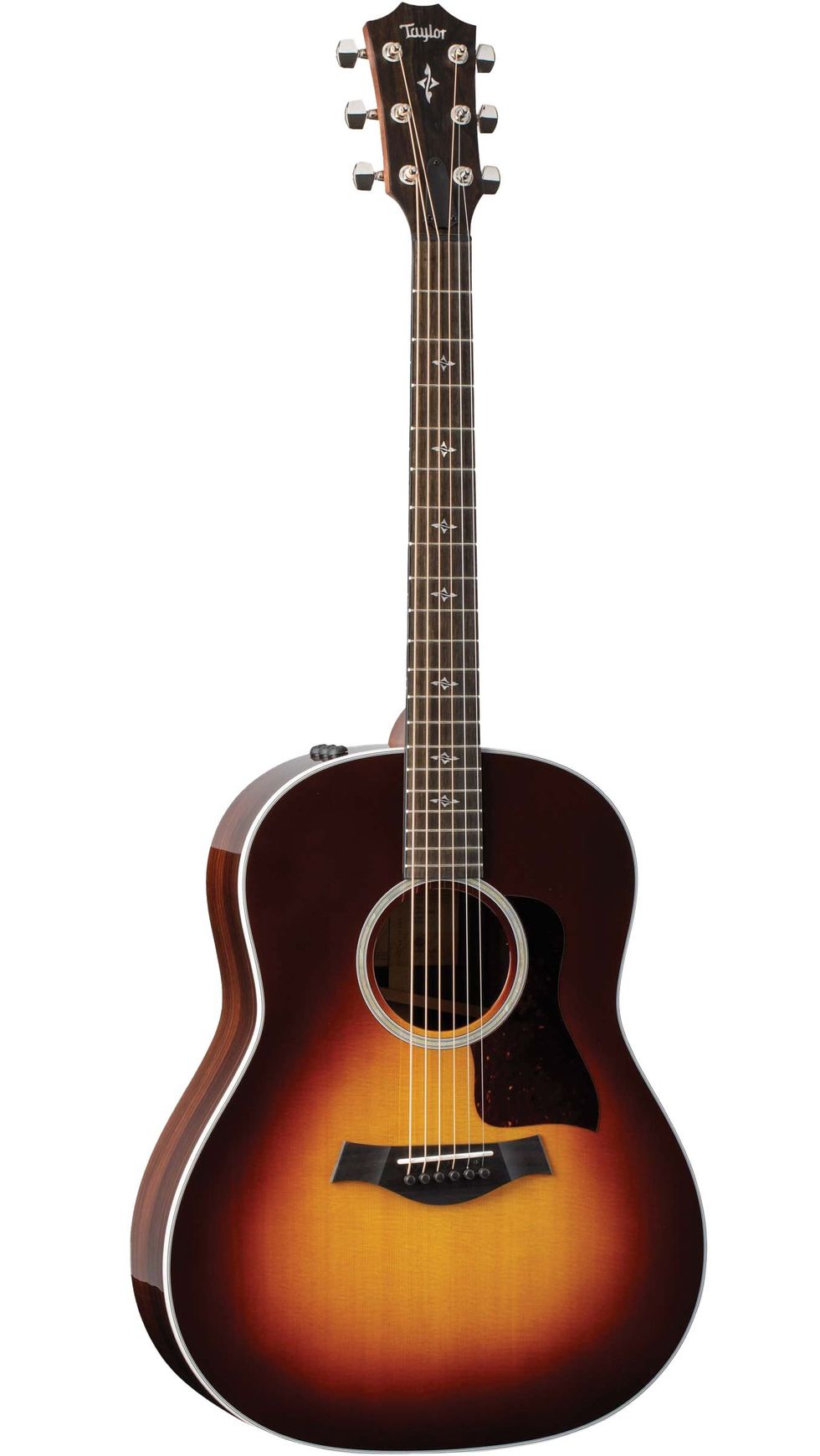
In the form of this slope-shouldered beauty, Taylor drew upon the enduring appeal of the beautiful Gibson J-45 silhouette, while offering a more balanced, bright, and lively tone profile. As with so many Taylors, the quality is more or less immaculate and the playability is first rate and ultra-silky. And while it’s an investment, the combination of timeless styling, a pretty voice, and fits-like-a-glove feel are the stuff of an heirloom piece.
$2,999 street, taylorguitars.com
MARSHALL Guv’nor (August 2023)
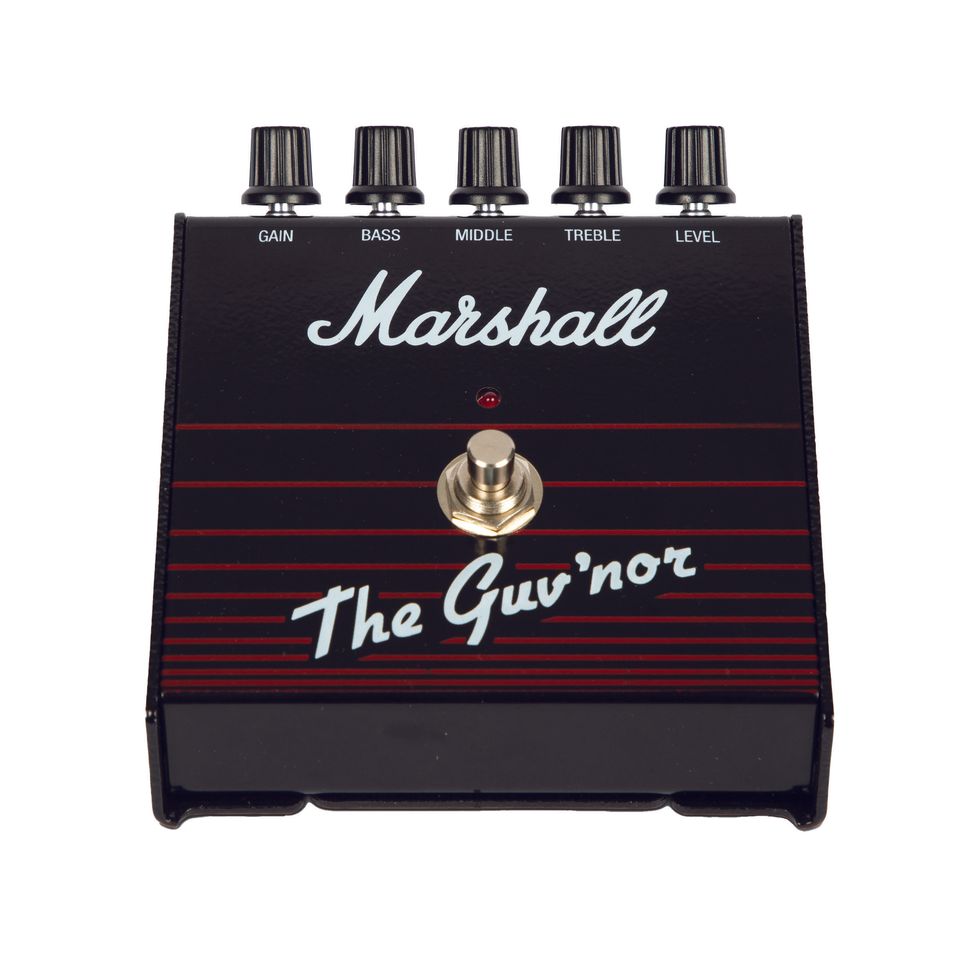
Though its reputation is built on hard rock and metal, you can coax a lot of surprising sounds out of a Marshall JCM800. The same goes for the Guv’nor, which Marshall designed to serve, effectively, as a JCM800 in a box. This U.K.-built reissue sticks to the style and configuration of the original ’80s edition. But the 3-band EQ section and flexible gain control make it capable of much more than stereotypical ’80s sounds. So don’t be surprised when you hear everything from shades of circa-’66 Beatles tones and tasty, rich, low-gain heat in addition to the very authentically Marshall muscle.
$249 street, marshall.com
JHS Pedals Plugin (August 2023)
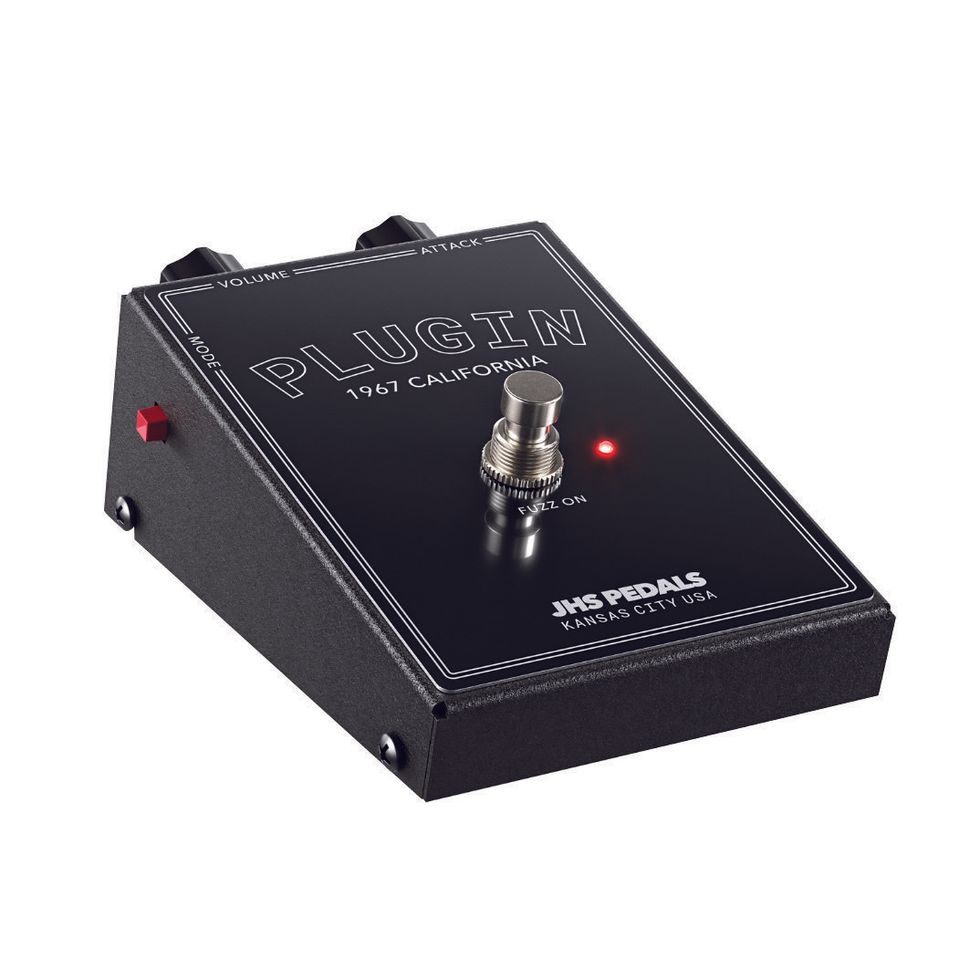
The Legends of Fuzz pedal series, which includes the Plugin, honors several circuits that were actually less than legendary in their time. The Jordan Bosstone, though now adored by vintage fuzz fiends, can be counted among those circuits that never achieved household-name status. But in the form of the Plugin, the Bosstone circuit gets the royal treatment—including a handsome, sturdy enclosure, and an additional louder, hard-clipping, mid-forward circuit that admirably bridges the gap between reedy ’60s-style buzz and more modern heavy fare.
$179 street, jhspedals.info
MESA/BOOGIE Mark VII (August 2023)
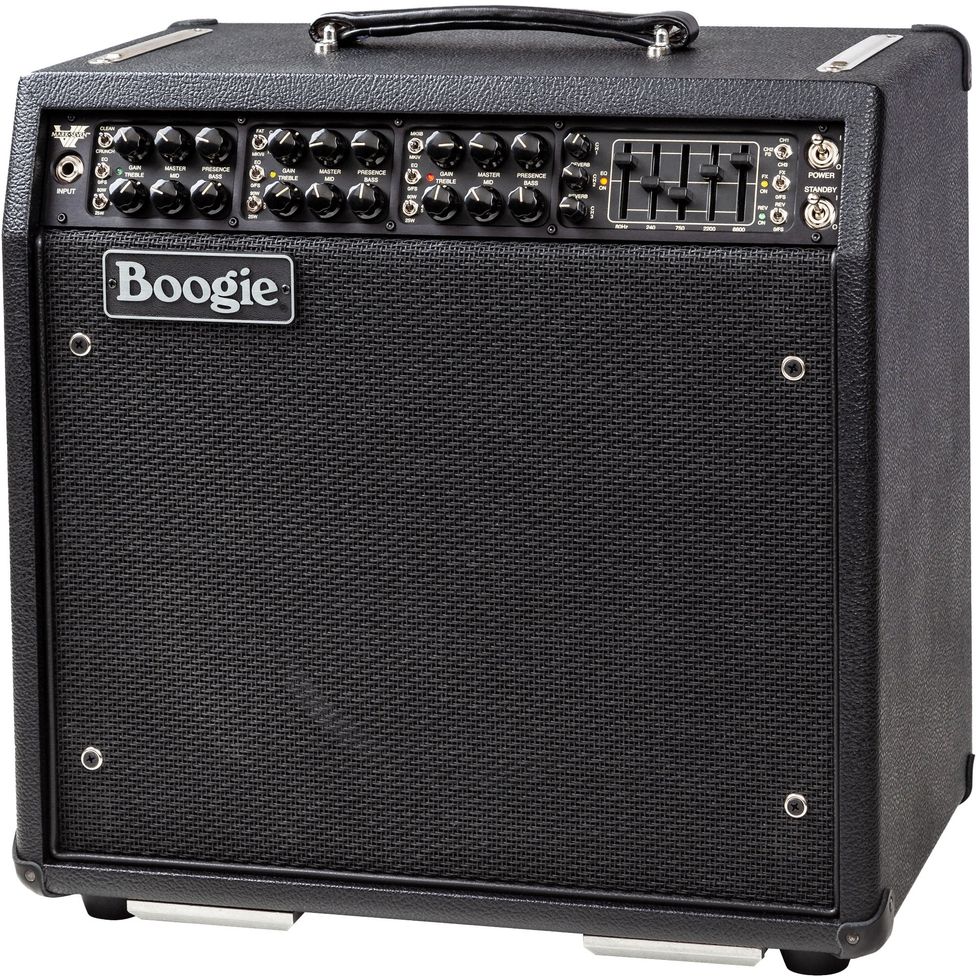
Available as a rack, head, or combo, Boogie’s Mark VII ain’t cheap, but it’s a rather magical—and powerful (90W)—gigging, recording, and practicing machine. The built-in CabClone IR has an internal load so it can be used with headphones or speaker-silent onstage. There’s an 8-position cab-select switch for each channel. The clean tones are rich, and four classic lead voices deliver loads of seminal high-gain tones. Better still, it’s intuitive and functional. In short, the Mark VII is a monumental feat of 21st-century tube-amp design.
$3,799 street, mesaboogie.com
VICTORY VS 100 Super Sheriff (August 2023)
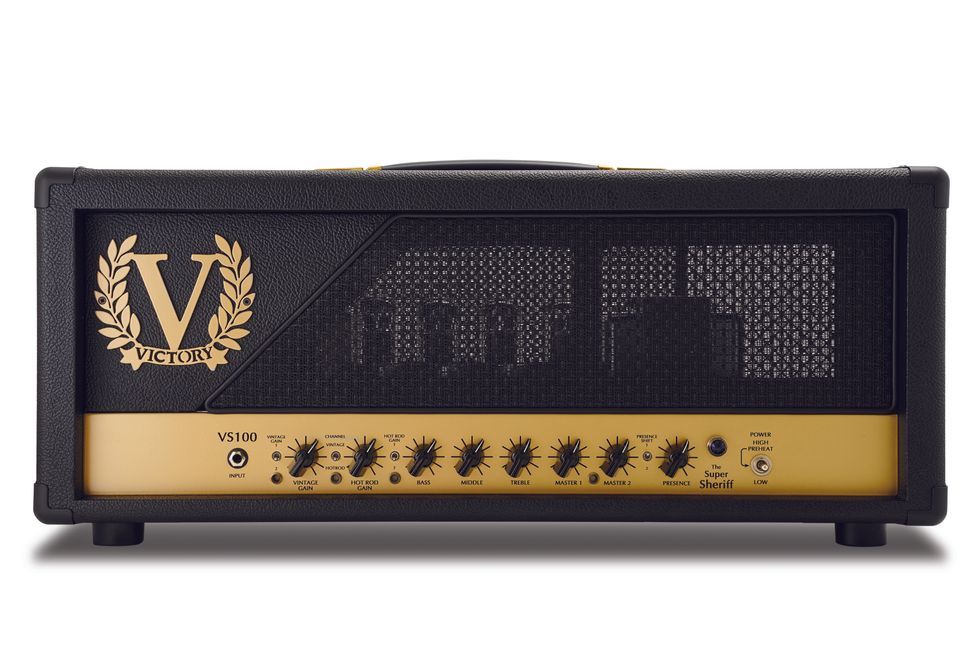
The latest Victory amp is a formidable 100-watt, EL34-powered flamethrower that spans decades of big-Brit-amp history. Four ECC83 preamp tubes help evoke ’60s through ’80s tones, from blues-rock to metal, thanks to four gain-range modes, multiple power modes, and a switchable master volume. And the 3-band EQ and presence control are clearly inspired by classic Marshall tone stacks. That range and versatility, authenticity of sound, and quality construction make the Super Sheriff a deal, in spite of the high-end price.
$2,399 street, victoryamps.com
PRS SE McCarty 594 (August 2023)
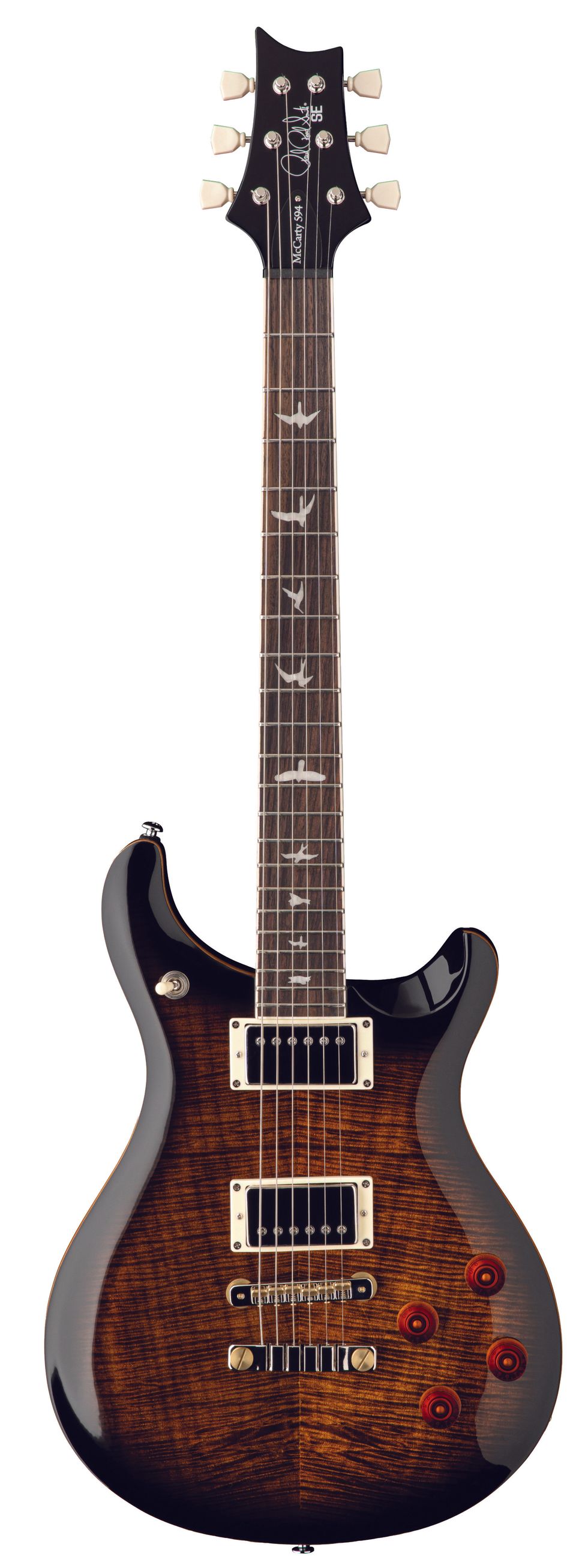
Another addition in PRS’ successful SE series, the SE McCarty 594 is a phenomenal value. It captures the essence of a premium McCarty, with its gorgeous flame-maple-veneer-top-over-mahogany body with gloss polyurethane finish, and trademark PRS bird inlays along the fretboard. The two low-output 58/15 LT “S” humbucking pickups have an old-school-PAF vibe and are rich with clarity and vintage soul, and in both pickup configurations, the dynamic range is incredibly wide. For anyone who’s lusted after a McCarty 594 but doesn’t have the cash—or fears nicking up a guitar that is precious—the SE McCarty 594 is an accessible gem.
$949 street, prsguitars.com
DUNLOP Cry Baby Daredevil Fuzz Wah (August 2023)
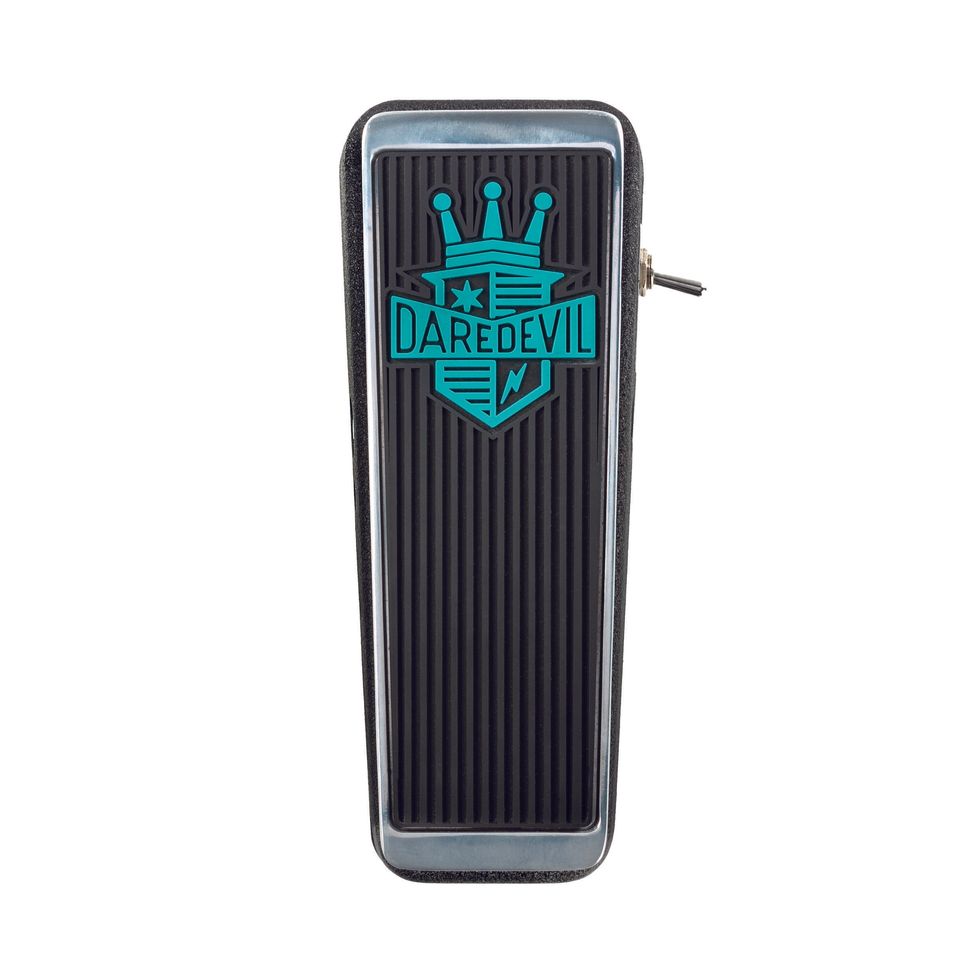
Jonny Wator’s Daredevil Effects has been a favorite around the halls of PG. They have always been high-quality, very homebrew, and strongly aligned with the nastier side of late ’60s and early-’70s fuzz and drive. Little surprise, then, that Daredevil and Dunlop found each other and made this little gleaming chrome monster. It’s loosely based on a combination of a Clyde McCoy Cry Baby wah and Fuzzrite-style voices. And it is, at turns, vicious and focused, creating a sonic sum that’s unique among wahs.
$229 street, jimdunlop.com
ELECTRO–HARMONIX Slap-Back Echo (September 2023)
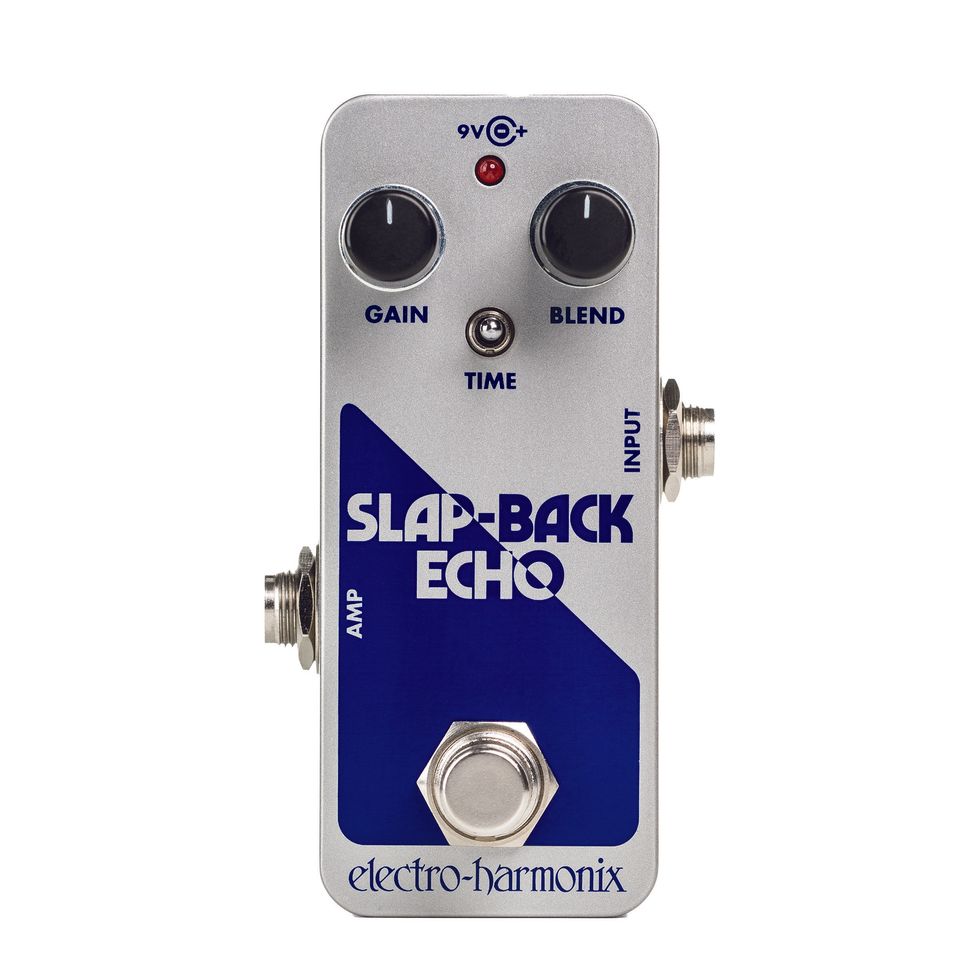
Comparatively ignored in its original incarnation, the EHX Slap-Back returns in much more petite, inexpensive, but no-less-intriguing form. The Slap-Back, as the name suggests, deals exclusively in short repeats at three preset times: 45, 65, and 100 ms. The resulting sounds span Beatle-style ADT effects and rockabilly grease—all beefed up by a cool drive section that can kick up an extra 20 dB of boost.
$81, ehx.com
SQUIER Paranormal Rascal Bass HH (September 2023)

The original Fender Rascal came and went much too fast. This new and very welcome Squier incarnation is a different animal. It has high-octane humbuckers rather than lipstick pickups, which situates it more completely in rocking and punky spheres. But the short scale (as well as a high-quality build) means it’s a sweet and fast player with output that emphasizes punchy fundamentals while ranging from hot to round and mellow tones.
$449 street, squierguitars.com
IBANEZ SML721(September 2023)

The fanned-fret Ibanez SML721 strikes a very nice balance between quality, affordability, and outside-the-box design. It’s finished in rose gold with gold appointments, and is clearly designed for speed—shredding on it feels effortless. The guitar is loaded with a pair of high-output, ceramic Q58 pickups with a 5-way switch, and Ibanez’s dyna-MIX10 switching system enables 10 combinations of full humbucker, coil-split, and coil-tapped sounds. Overall, the SML721 is a lethal, modern vision of a shred machine.
$999 street, ibanez.com
FENDER Shields Blender (October 2023)
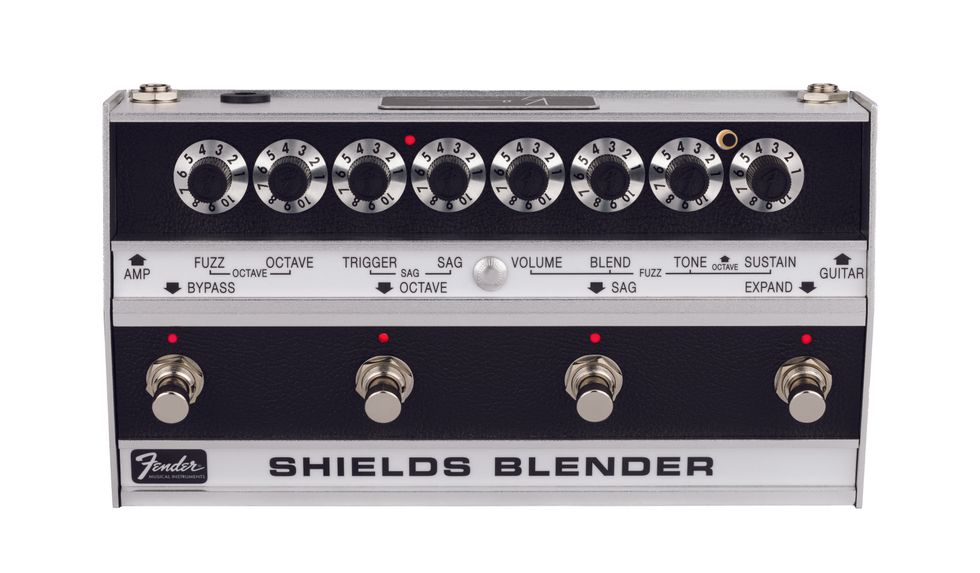
My Bloody Valentine’s Kevin Shields first used an original Fender Blender octave fuzz on the show-closing sensory-overload version of “You Made Me Realise.” And as you move through the range of classic to terrifying tones, you can hear many ways that the new Shields Blender—which initially can feel quite complex—could fit in that mad weave of overtones. The Shields Bender isn’t for everyone. But as one masters its intricacies, its utility as an octave fuzz, capacity for more demented fare, and sheer power create sprawling landscapes to roam within.
$299 street, fender.com
ELECTRO-HARMONIX/JHS Lizard Queen (October 2023)
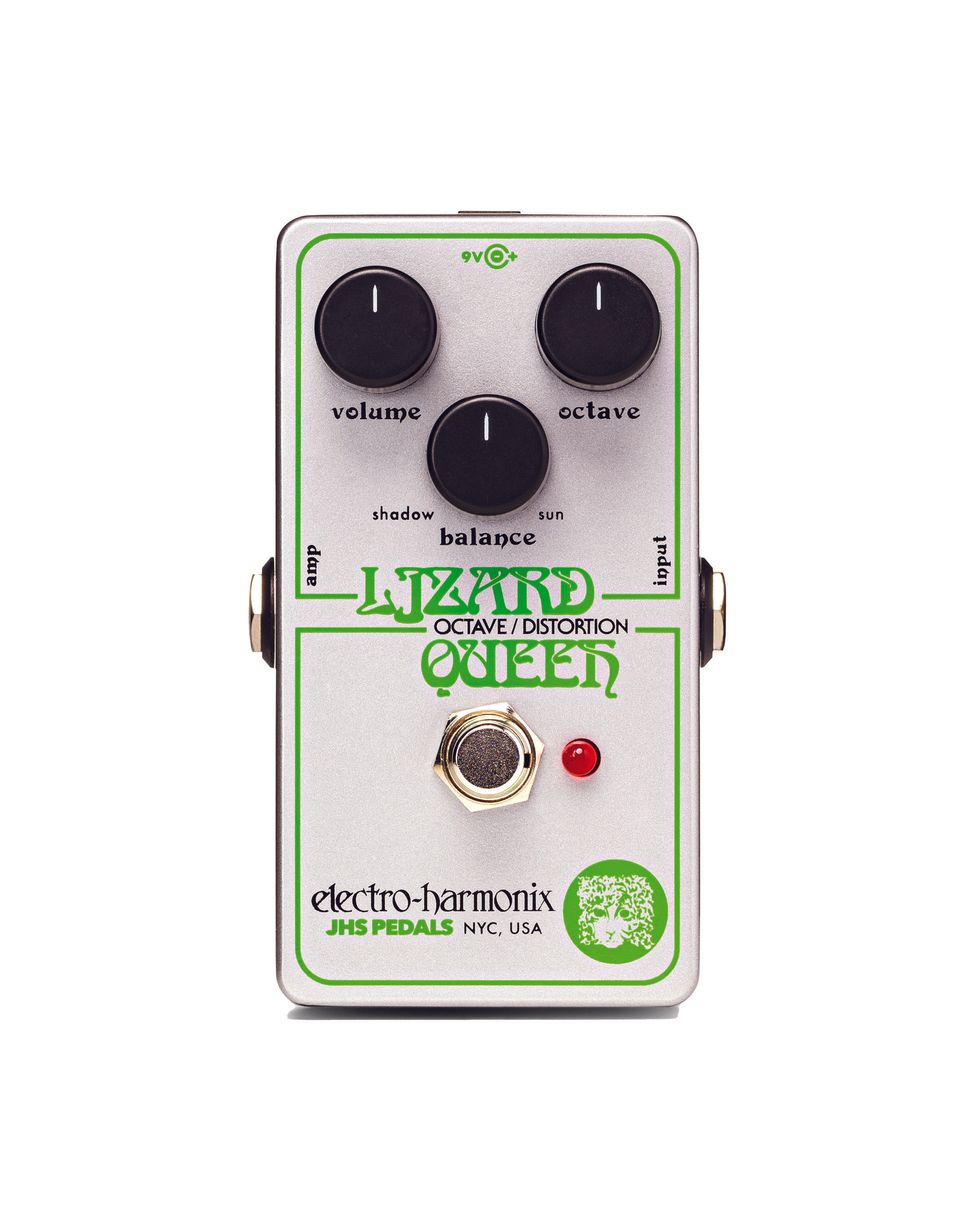
This rude reptilian is a silicon-transistor-based octave-up fuzz that’s monstrous yet controllable, reactive, and articulate. It’s also easier to use than many other octave/fuzz devices at or above its very reasonable price. With just three dials—volume, balance, and an octave control that ranges from zero (to the left) to a full high-octave setting (to the right)—its impressive output means the Lizard Queen will have no trouble slithering to the front of a live mix.
$99 street, ehx.com
J. ROCKETT El Hombre (October 2023)
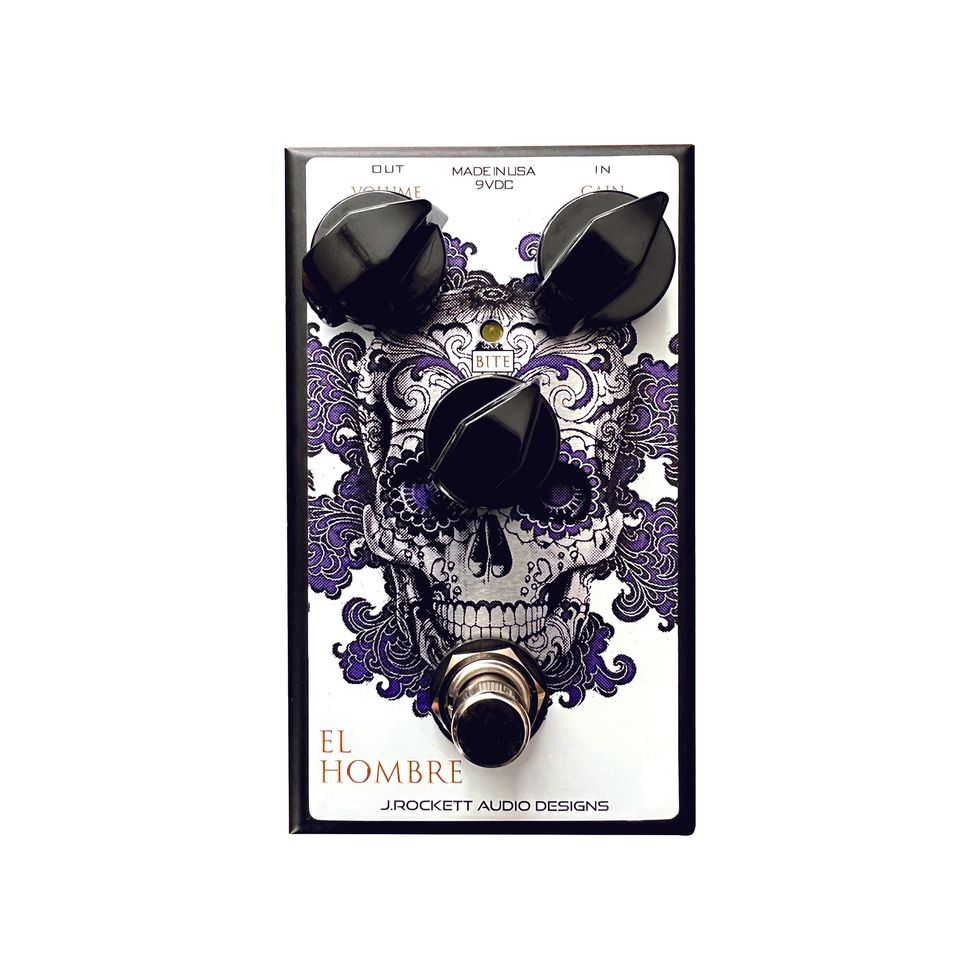
The El Hombre puts one of the holiest of holy grail tones—that of the Rev. Billy F. Gibbons—at your fingertips. This sturdy op-amp-driven box with silicon clipping diodes is also an excellent overdrive outside of that realm—capable of adding just a little hair, growling big and low like a fat alligator, or being pushed to plexi-like explosiveness. It’s also super responsive to the touch, so sustained bends sing, pinch harmonics ring, and…well, how, how, how, how.
$199 street, rockettpedals.com
JAM PEDALS Delay Llama Mk3 (October 2023)
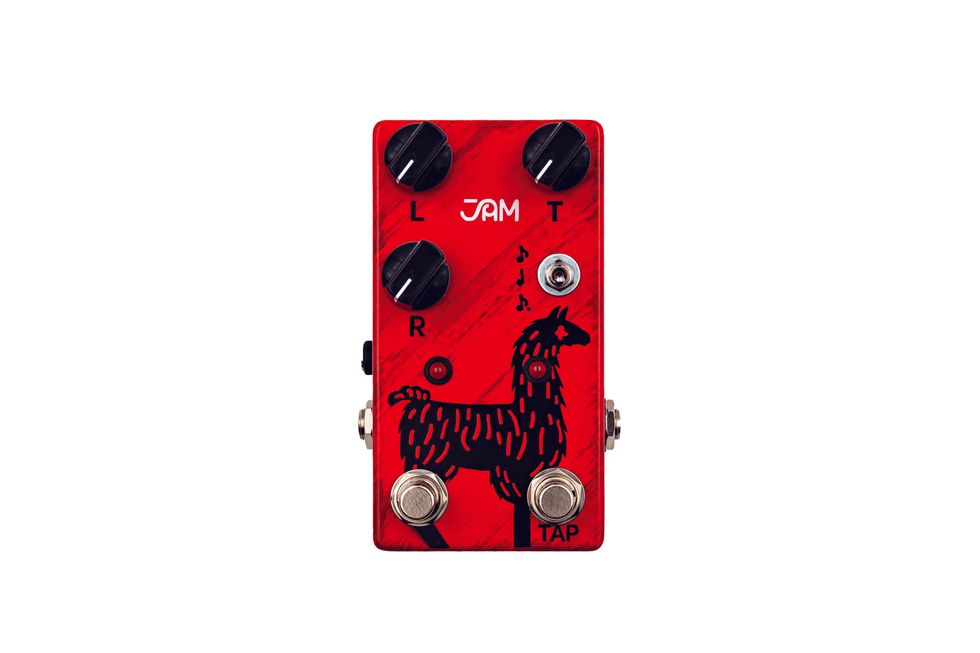
In this upgrade of the original Delay Llama, those sneaky folks at Jam Pedals have brought much of the essential bonus functionality of 2020’s Delay Llama Xtreme to a more compact stomp with a simple and familiar layout. The pedal reveals a superbly characterful and juicy-sounding analog delay voice that shines—even within a product category that’s rich with enticing delay sounds. And although the repeats pot taper could use some fine-tuning, the Delay Llama Mk3 is still a standout in the analog delay camp, any way you cut it.
$269, jampedals.com
UAFX Galaxy ’74 Tape Echo and Reverb (October 2023)
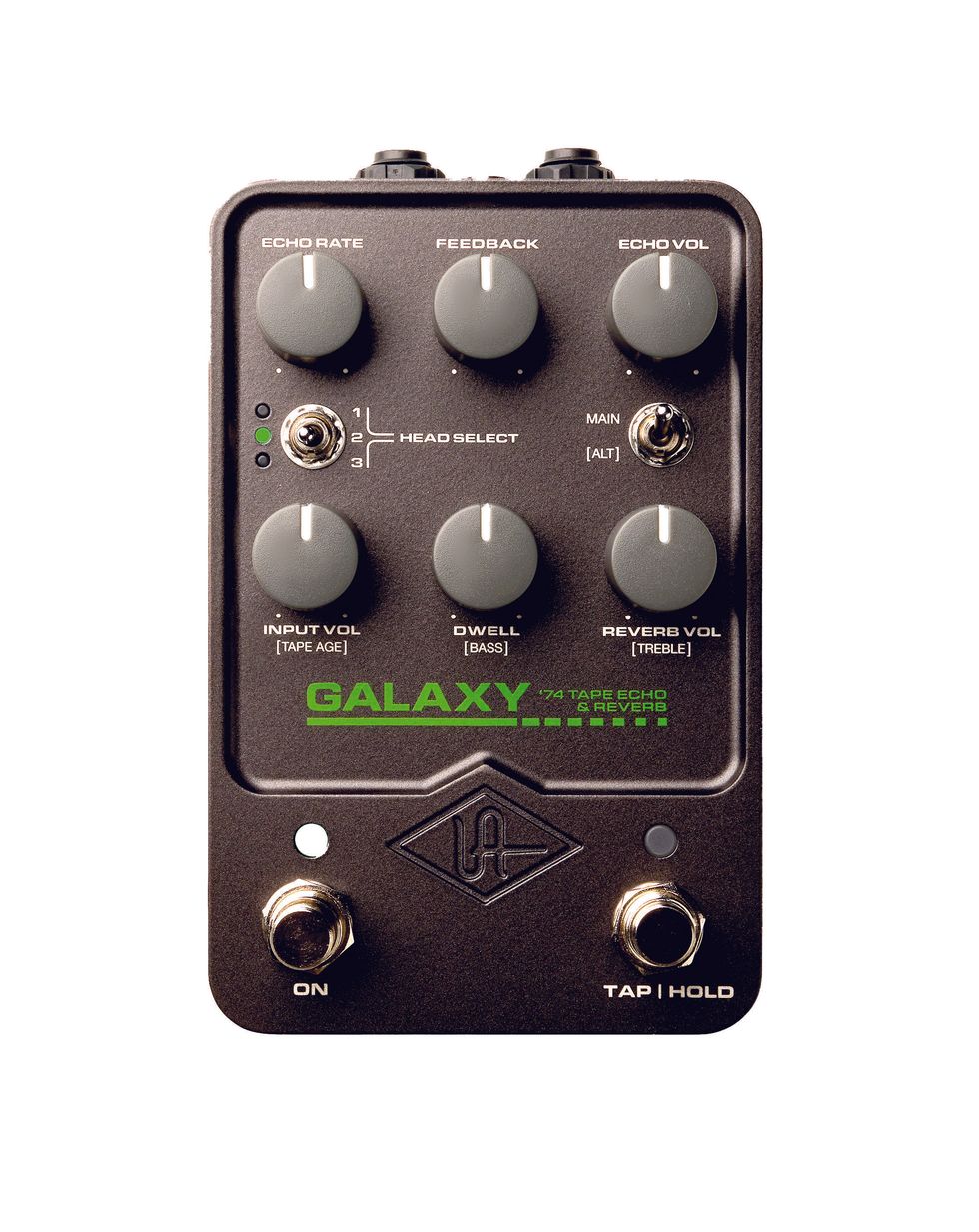
There are few effects quite as fun and full of ambience-enhancing potential as a Roland RE-201 Space Echo, and Universal Audio clearly put a lot of thought and energy into capturing that essence in the Galaxy ’74. There are few facets of the RE-201’s functionality that the Galaxy doesn’t replicate. The sounds can be resplendent with air and overtones or beautifully blurred and disorienting. And while only a few other tape echoes rival the RE-201 for pure ergonomic and operational joy, the Galaxy is a blast to use for real-time, virtual-tape-head manipulations that will drive space rock and Nigel Godrich fans to giddiness.
$349 street, uaudio.com
EARTHQUAKER Ledges (October 2023)
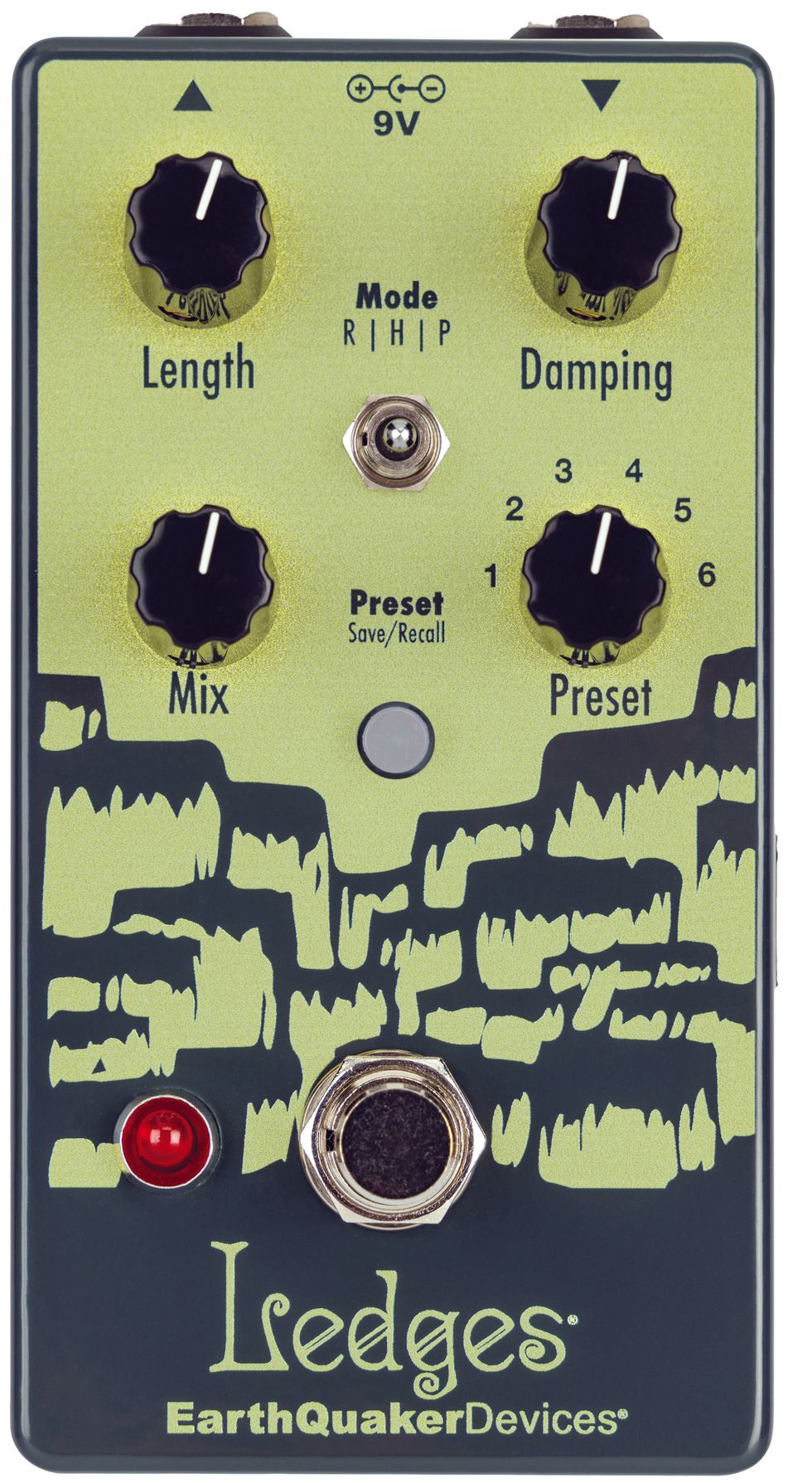
EQD has brewed up quite a few classic reverbs in their time, from the radical to the utilitarian. The new Ledges falls somewhere in between. The room, hall, and plate voices cover reverberations that range from barely there to out there. It’s a killer option for players that want to probe the outer limits and those that can’t afford to get lost in endless possibilities on stage.
$199 street, earthquakerdevices.com
DEATH BY AUDIO Disturbance (October 2023)
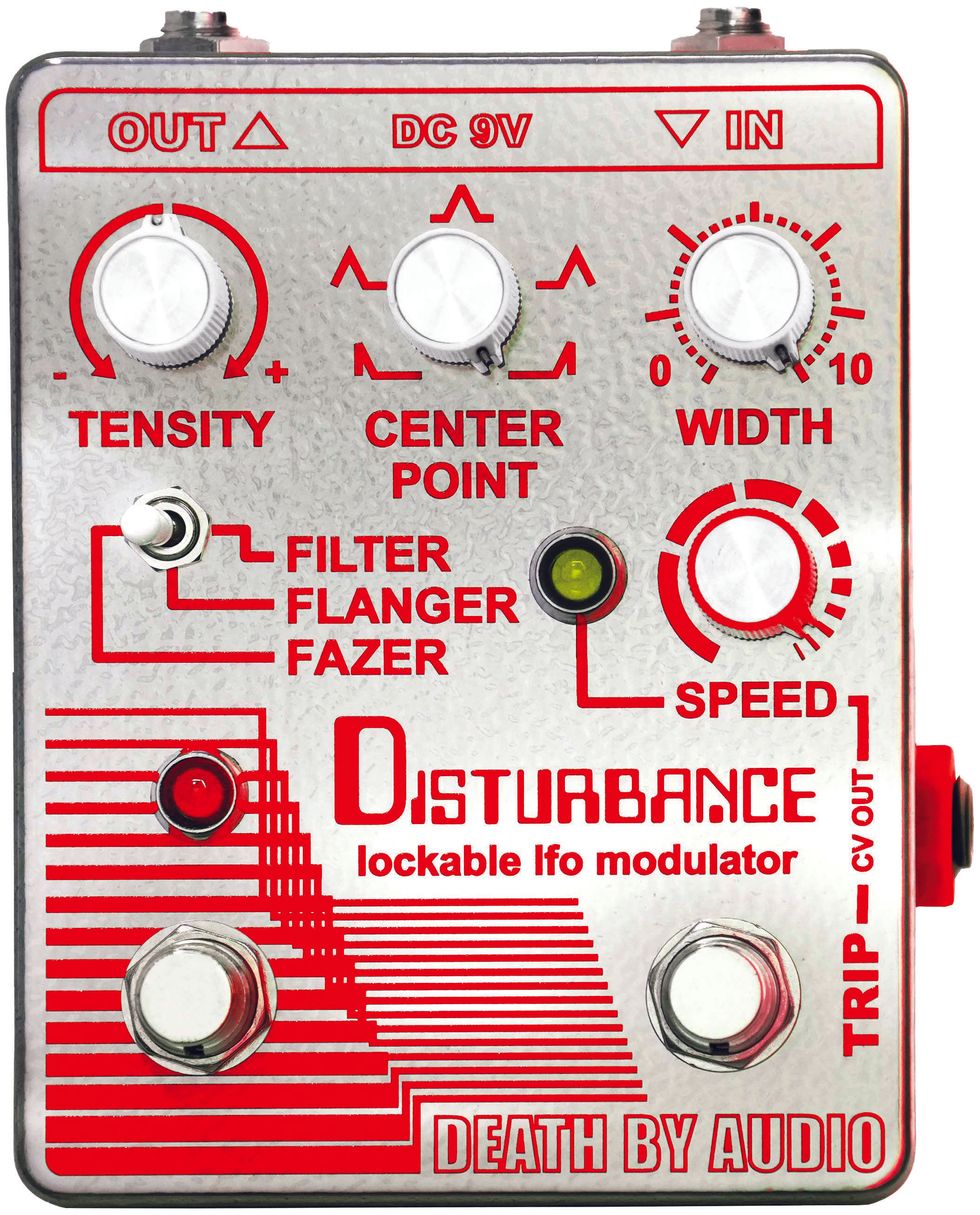
DBA relishes the opportunity to turn a conventional effect—or, in this case, three—on its head. The Disturbance manages to excel as a phaser, flanger, and filter. But the highly interactive controls can open the door to stretching those effects to wild ends, enabling odd harmonic peaks, hollowed out phase tones, and more traditional fare like faux-Leslie sounds. Like so many DBA pedals, it’s easy to imagine this one as an invaluable, ultra-versatile studio tool, and a source of unexpected surprises that can shake up your stage sound in a big way.
$250 street, deathbyaudio.com
WARM AUDIO Mutation Phasor II (October 2023)
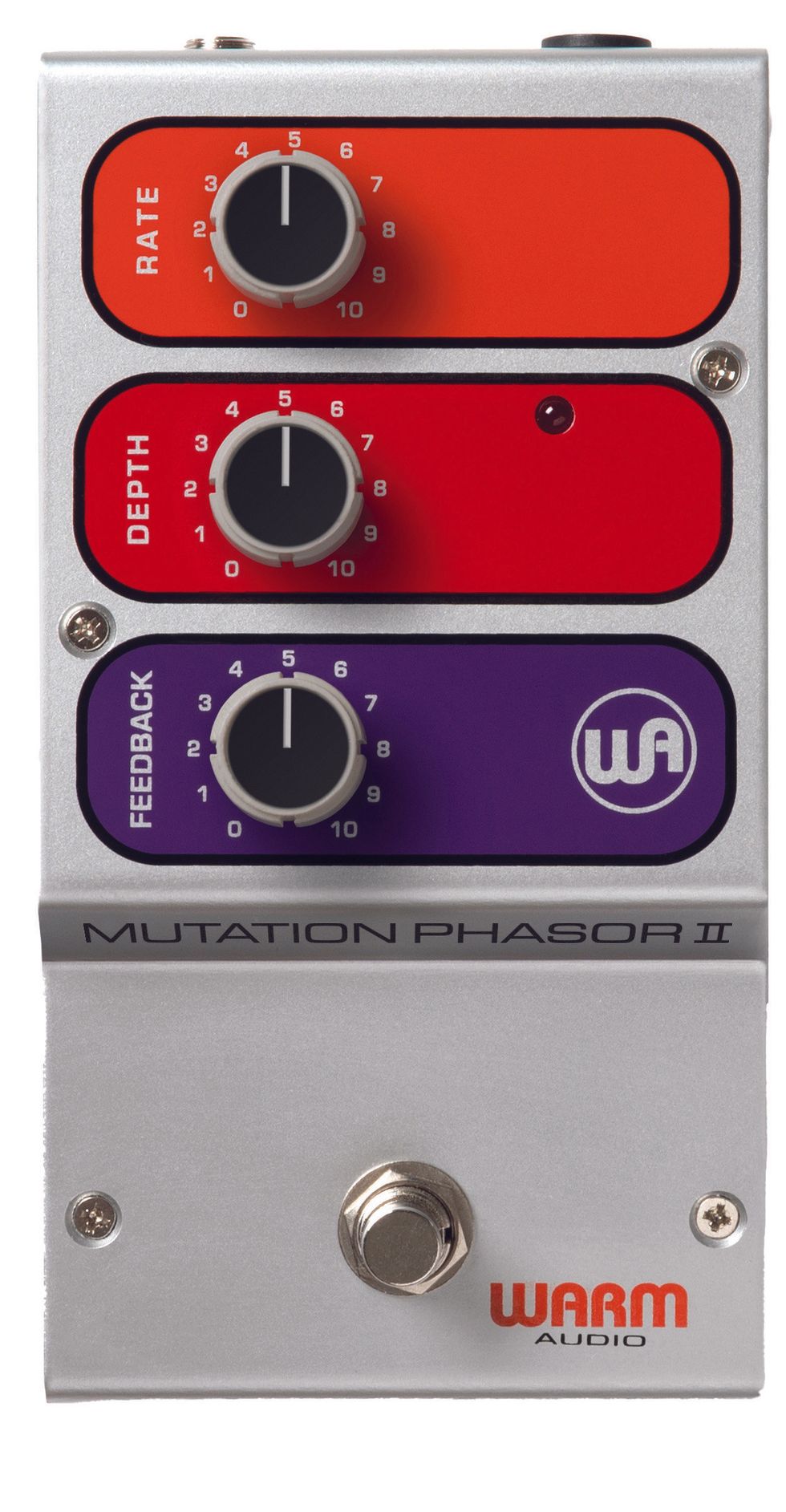
Mu-Tron not only made some of the coolest looking effects of all time, they also made some of the most unusual and unique sounding pedals of the 1970s. Both qualities are plain to see and hear in Warm Audio’s very faithful take on the Mu-Tron Phasor II. Like the original, Warm Audio’s version has just three knobs, but they yield a cornucopia of rich phase tones that, at advanced settings, spill a bounty of elastic, vowel-y voices and hyper-hummingbird textures. At $149, it’s a sweet deal, too.
$149 street, warmaudio.com
CATALINBREAD Tremolo8 (October 2023)
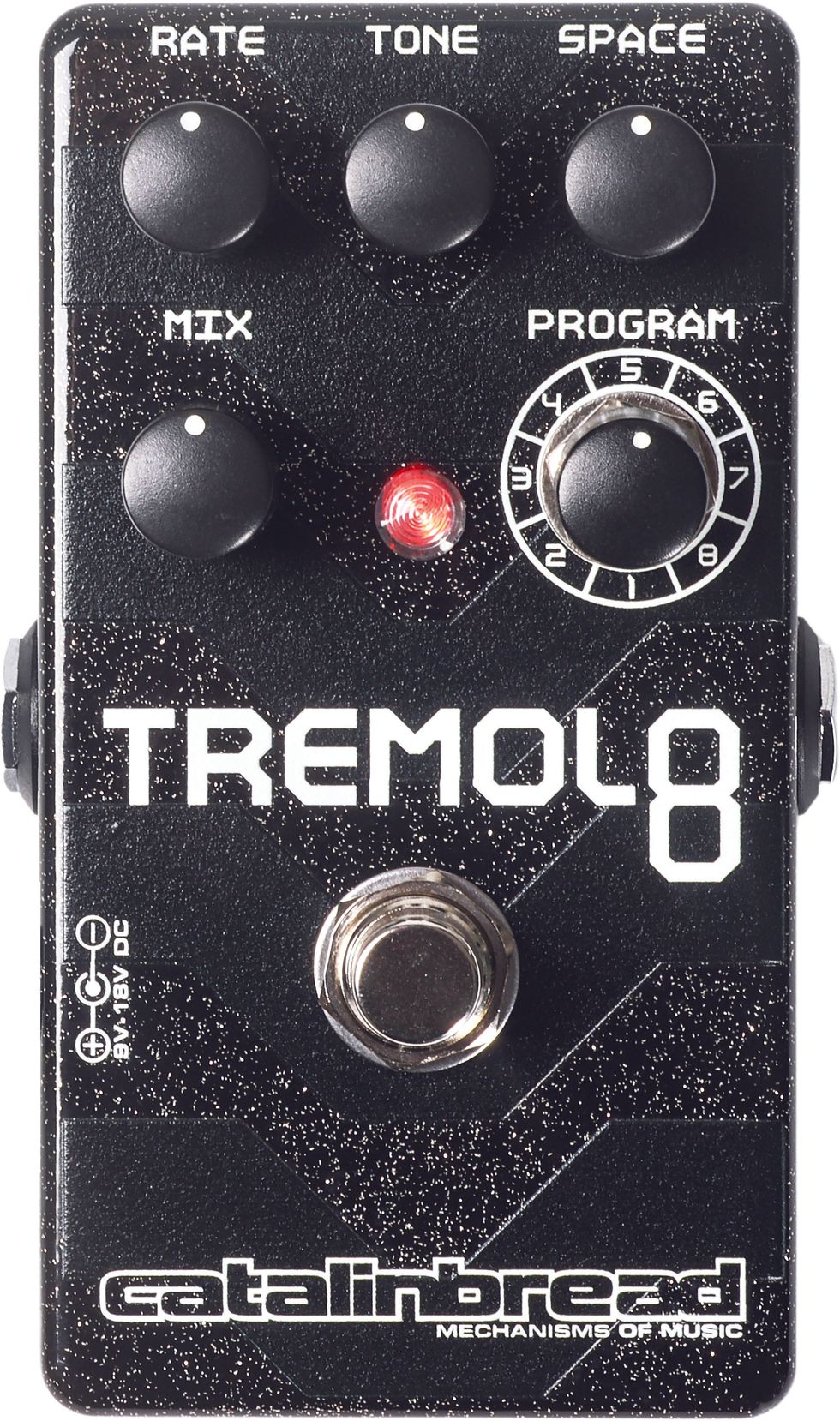
Catalinbread’s latest entry in the tremolo field is priced just a bit higher than most trem’ boxes, but the smart design and vast features of the Tremolo8 put it head-and-shoulders above its standard-stompbox-sized competitors. Its eight functions, which call up effects like ring modulation and chorus that meld with onboard reverb, are each deeply tweakable via the pedal’s control set.
$219 street, catalinbread.com
DOD Envelope Filter 440 (October 2023)
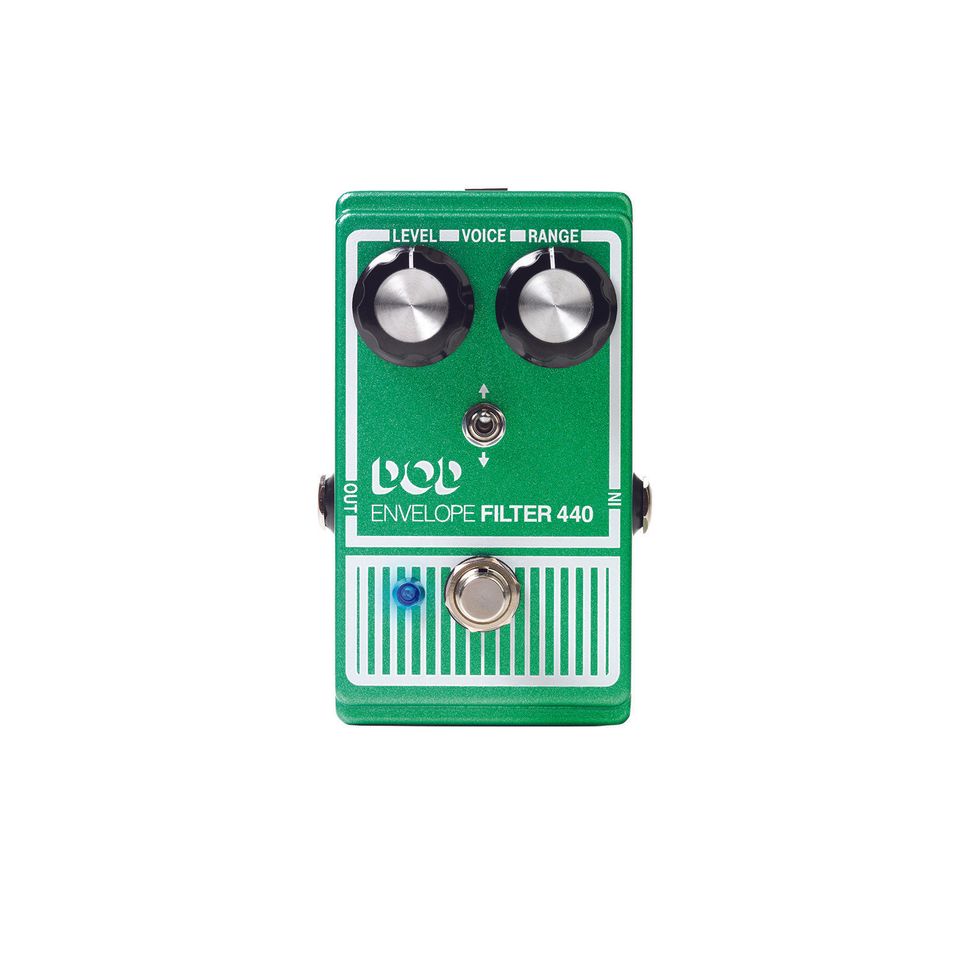
The newest reissue of DOD’s classic envelope filter maintains the simple control set, usability, design aesthetic, and distinct personality—particularly the sweep and warm voice—of the original. There’s one new feature onboard, and that’s a switchable voice direction, which opens up more room for fun and creativity. It’s an all-around great sounding, no-nonsense pedal that nails the envelope filter formula in a way that any player can easily dive into.
$129, digitech.com
ZEROFIVE AUDIO Lowrider (October 2023)
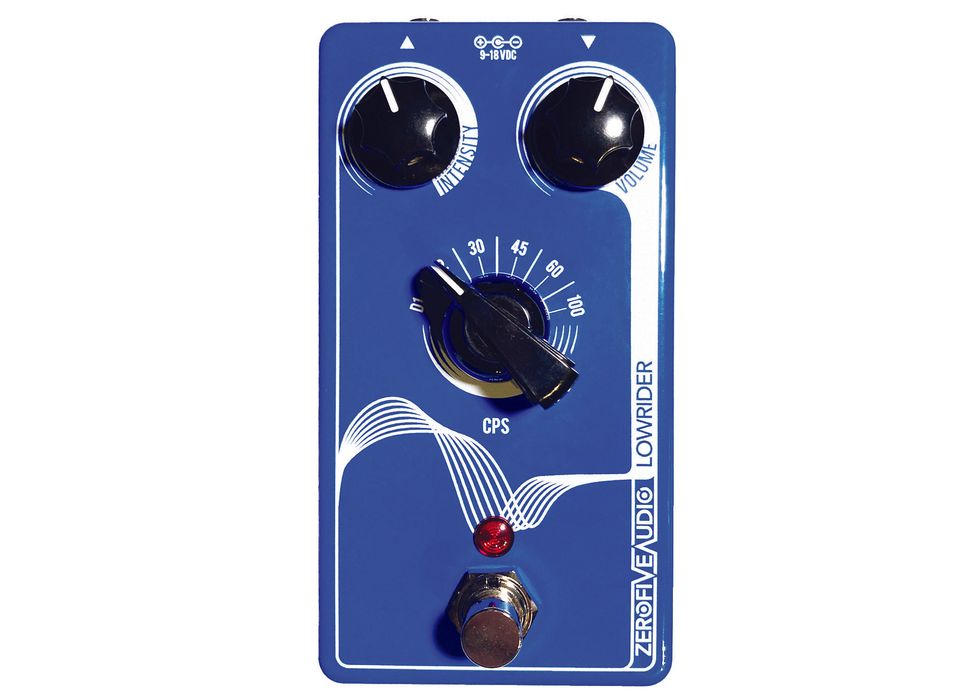
The Lowrider from ZeroFive Audio does an exceptional job of packaging what’s usually an outboard effect into an all-analog pedalboard fixture. It only recreates the bass boost portion of Pultec’s legendary equalizer—and does so with preset cut and boost ratios—but the Lowrider’s booming bottom-end in a stompbox package make it a stand-out.
$218 street, zerofiveaudio.com
ESP LTD KH-V (October 2023)
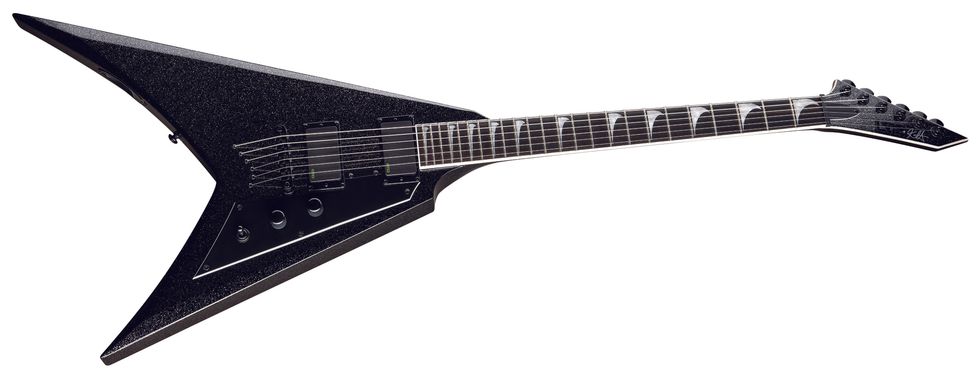
Calling all shredders! The ESP LTD KH-V is the second entry in ESP’s V-shaped Kirk Hammett signature catalog, but the KH-V stands out for its combination of quality craftsmanship that pulls together especially articulate active EMG pickups and other premium components. Our reviewer coaxed everything from John Mayer clean tones to full-on Hammett annihilation from the KH-V, without experiencing tonal compromise on either end.
$1799 street, espguitars.com
TAYLOR 112CE-S (October 2023)
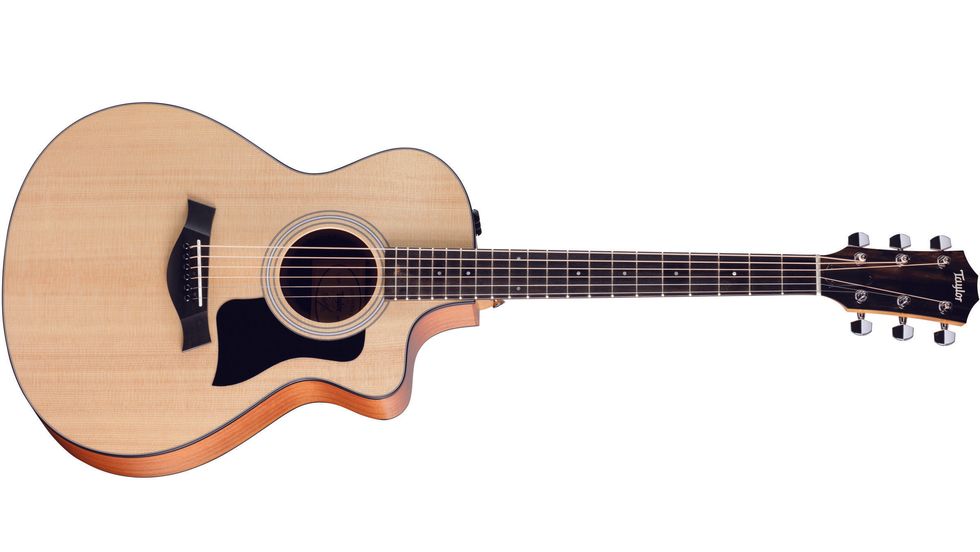
There’s nothing new about Taylor building a tip-top quality flattop that plays like a dream. But getting all that for just less than 800 bucks is worth shouting about. The big news about this newest addition to Taylor’s affordable 100 series is the introduction of layered-sapele back and sides, which conspire with the solid Sitka spruce top to shape a warm but bright and lively personality. It shines in fingerstyle situations. And with Expression System 2 electronics on board, it’s gig-ready right out of the case.
$799 street, taylorguitars.com
UAFX Evermore (November 2023)
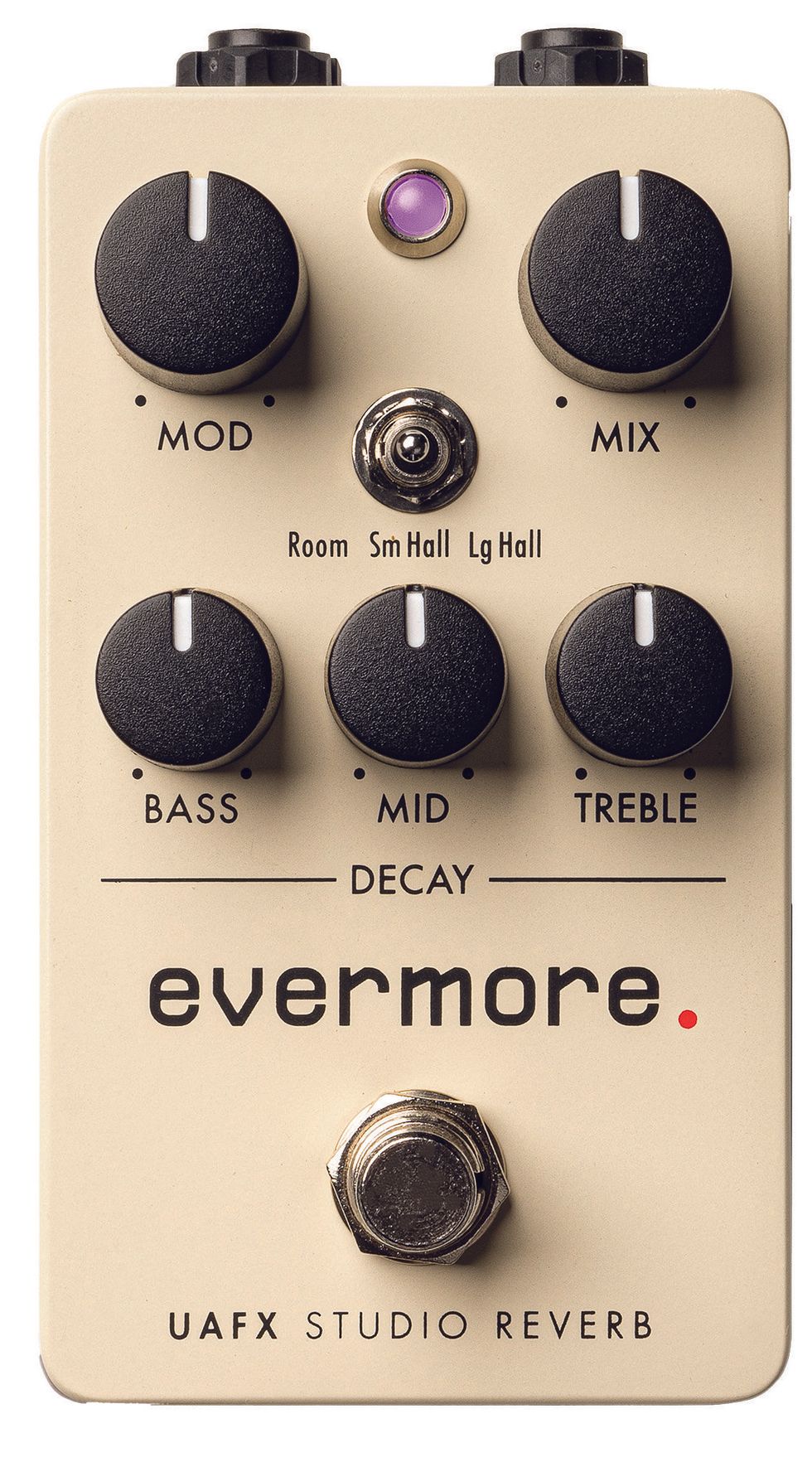
Universal Audio unleashed a new line of more affordable pedals this summer that distilled popular features from their larger, more expensive and expansive Starlight, Del-Verb, and MAX stomps. By using the same algorithms that drive those superb effects, the Evermore Lexicon 224-style reverb, Orion Echoplex EP-3 emulation, and UA 1176 compressor model rise to impressively authentic sounding heights. The Evermore’s 224 sounds—and the unusual and engrossing control set that shapes them—can span room and Blade Runner-soundtrack immensity and otherworldliness. The Orion taps into some of the most peculiar idiosyncrasies of the EP-3 to create a startlingly whole representation of that unit’s sound-stretching capabilities. And the 1176, introduces dual-compressor modes that honor Little Feat and Led Zeppelin production techniques and generate compression colors with scoops of satisfying grit and extra sustain.
$199 (1176) and $219 street (Orion and Evermore), uaudio.com
UAFX Orion (November 2023)
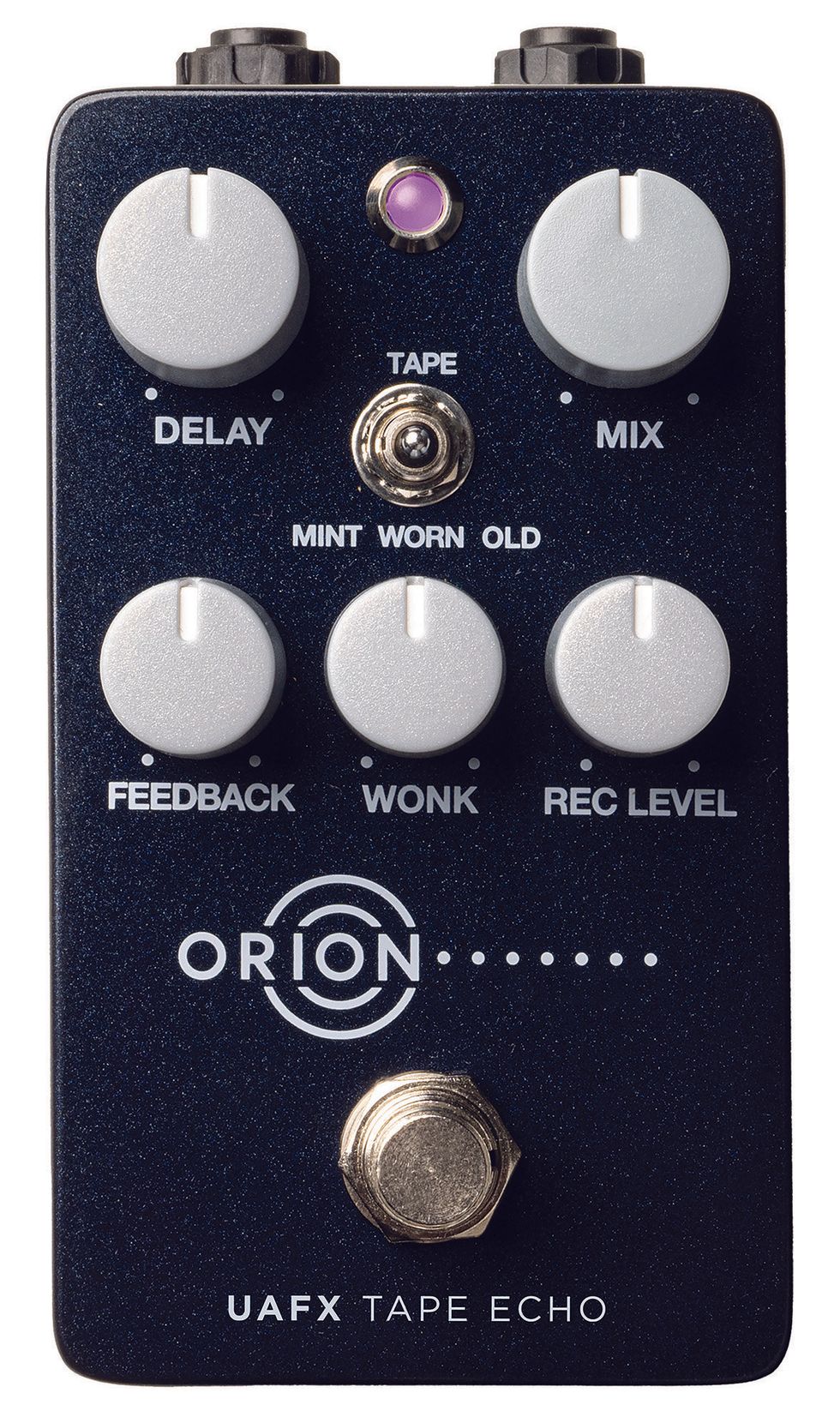
Universal Audio unleashed a new line of more affordable pedals this summer that distilled popular features from their larger, more expensive and expansive Starlight, Del-Verb, and MAX stomps. By using the same algorithms that drive those superb effects, the Evermore Lexicon 224-style reverb, Orion Echoplex EP-3 emulation, and UA 1176 compressor model rise to impressively authentic sounding heights. The Evermore’s 224 sounds—and the unusual and engrossing control set that shapes them—can span room and Blade Runner-soundtrack immensity and otherworldliness. The Orion taps into some of the most peculiar idiosyncrasies of the EP-3 to create a startlingly whole representation of that unit’s sound-stretching capabilities. And the 1176, introduces dual-compressor modes that honor Little Feat and Led Zeppelin production techniques and generate compression colors with scoops of satisfying grit and extra sustain.
$199 (1176) and $219 street (Orion and Evermore), uaudio.com
UAFX 1176 (November 2023)
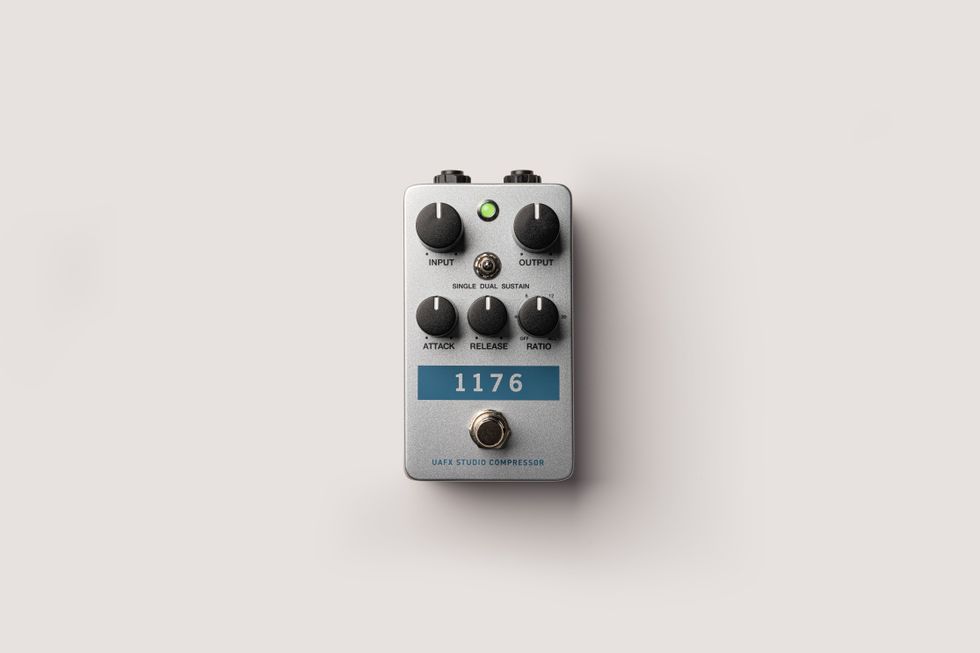
Universal Audio unleashed a new line of more affordable pedals this summer that distilled popular features from their larger, more expensive and expansive Starlight, Del-Verb, and MAX stomps. By using the same algorithms that drive those superb effects, the Evermore Lexicon 224-style reverb, Orion Echoplex EP-3 emulation, and UA 1176 compressor model rise to impressively authentic sounding heights. The Evermore’s 224 sounds—and the unusual and engrossing control set that shapes them—can span room and Blade Runner-soundtrack immensity and otherworldliness. The Orion taps into some of the most peculiar idiosyncrasies of the EP-3 to create a startlingly whole representation of that unit’s sound-stretching capabilities. And the 1176, introduces dual-compressor modes that honor Little Feat and Led Zeppelin production techniques and generate compression colors with scoops of satisfying grit and extra sustain.
$199 (1176) and $219 street (Orion and Evermore), uaudio.com
SQUIER Paranormal Jazzmaster XII (November 2023)

The lovely Jazzmaster XII may not totally satisfy budget-conscious Fender-philes that clamor for a Squier version of the classic Electric XII. But it is a killer 12-string that, for its economical price and styling, carves out a cool niche all its own. In general, the Jazzmaster XII exhibits darker tone tendencies than a vintage Electric XII or a Rickenbacker 12-string. But it’s very playable and the relatively thick output can help guitarists avoid well-tread electric 12-string paths. At $449, it also makes investment in an electric 12-string, which will be a secondary instrument for many, a more appealing and attainable proposition.
$449 street, squierguitars.com
ELECTRO–HARMONIX Hell Melter (November 2023)
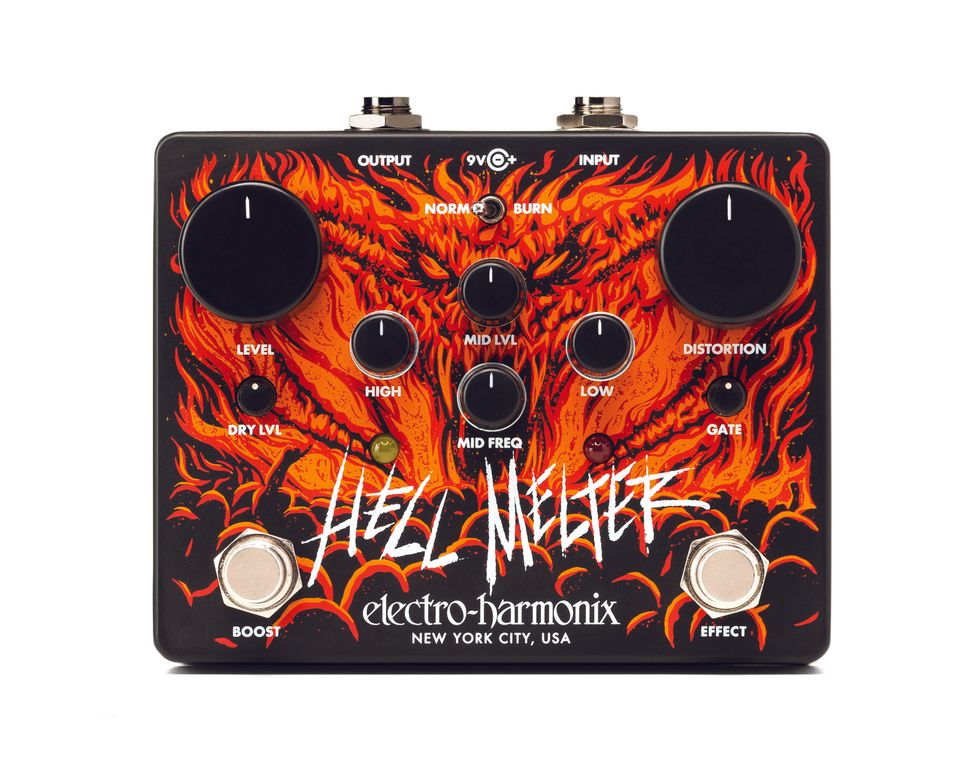
Electro-Harmonix’s take on the Boss HM-2, the Hell Melter, excels at brutal riffage—it’s no coincidence that the last three digits in its price tag are 666 (as in $176.66). But our reviewer found that in addition to nailing the Scandinavian death metal “chainsaw” sound, the pedal’s flexible controls also held solid classic-rock guitar tones, and when set for use as a lead boost, it generated sustain worthy of David Gilmour, who famously dabbled with the HM-2!
$176 street, https://www.ehx.com/
Read the ReviewPRS NF 53 (December 2023)
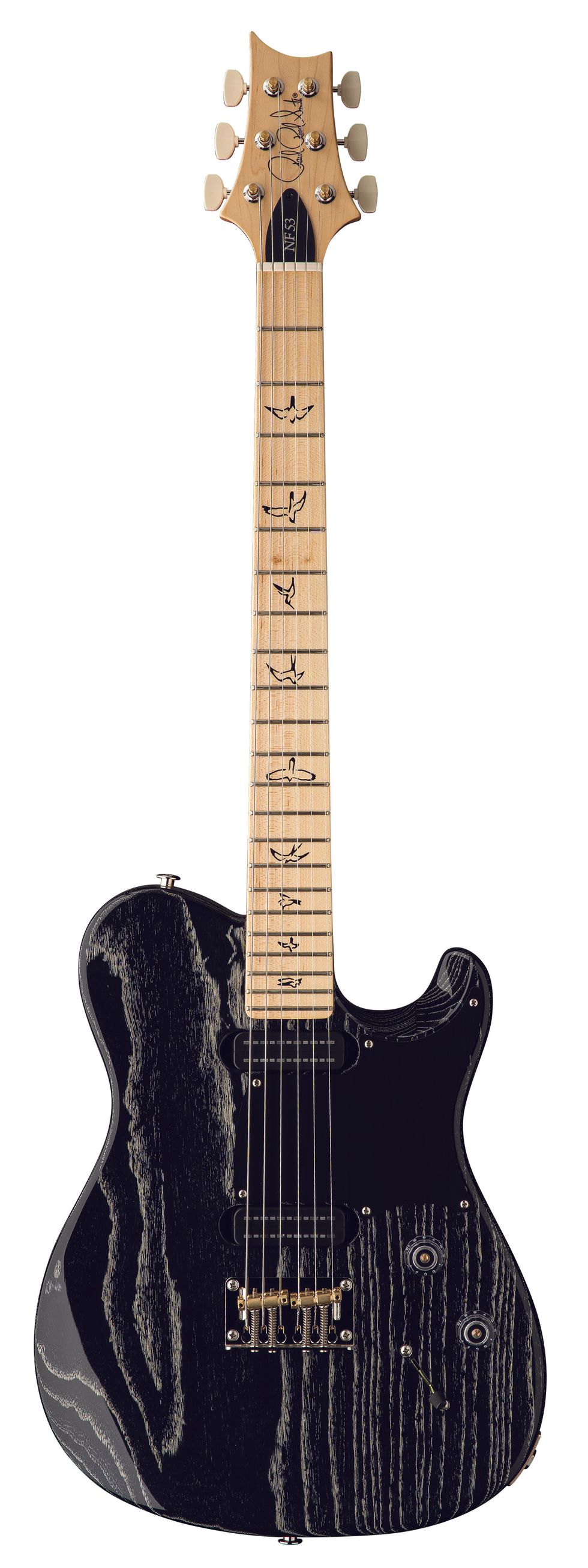
Thoughtfully designed and very well put together, the NF 53 is a nifty spin on the world’s first mass-produced solidbody electric guitar, but one that takes the format in new directions. The relative simplicity of the instrument is no impediment to versatility. But the real joy in the NF 53 is that it plays beautifully and offers a wide swath of dynamic, smooth, and often trenchant voices that are all its own.
$2,899 street, prsguitars.com
FENDER Waylon Jennings Phasor (December 2023)
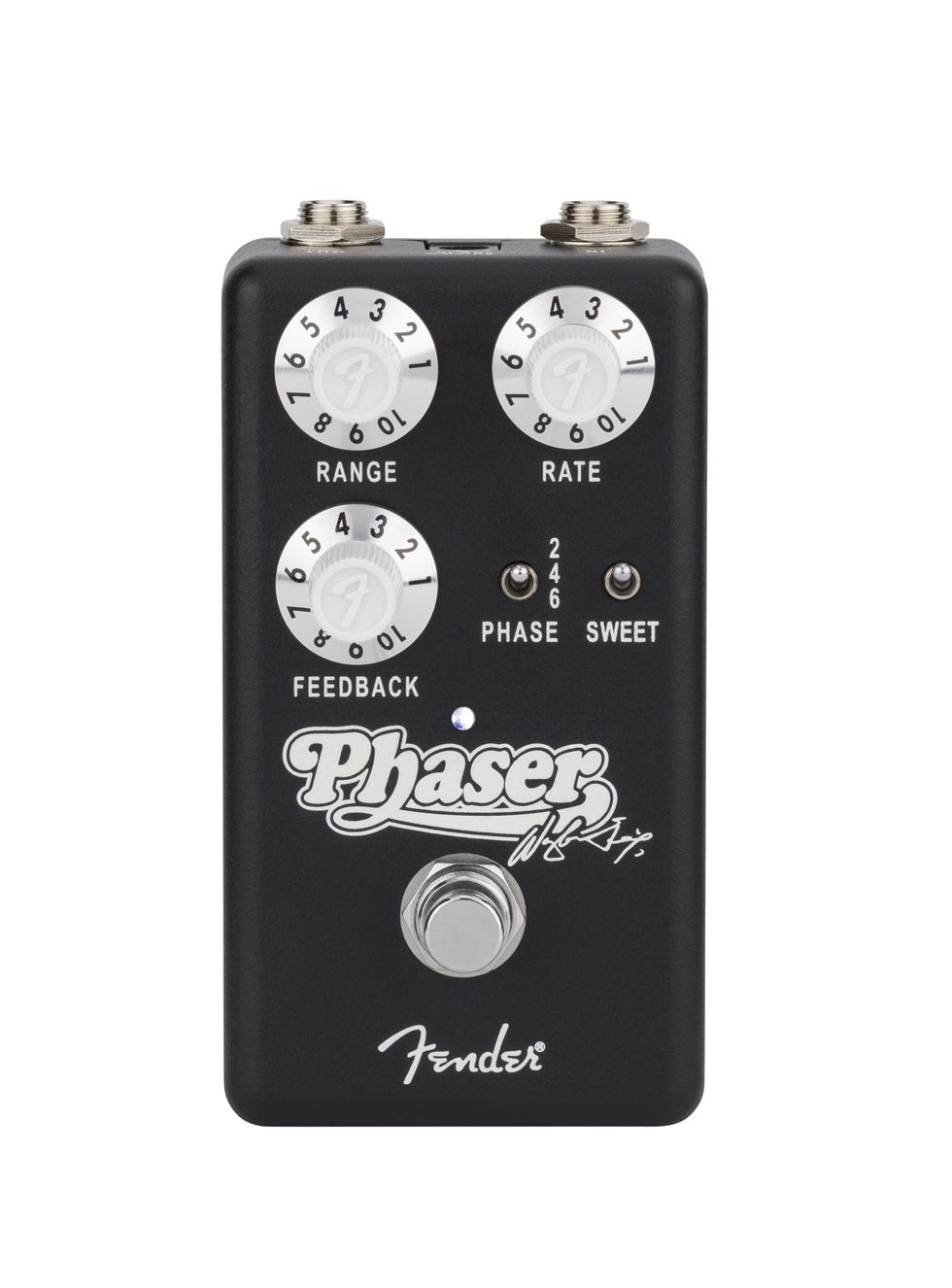
There are plenty of weird, wobbling, bubble gum-chewy textures in Fender’s tribute to Jennings that have nothing to do with classic outlaw country, that psychedelicists will relish. But the mellower fare that made Waylon’s tunes move is here in tasty plentitude, too, and can be tuned to your own needs with a flexible, interactive control set that’s full of surprises.
$129 street, fender.com
